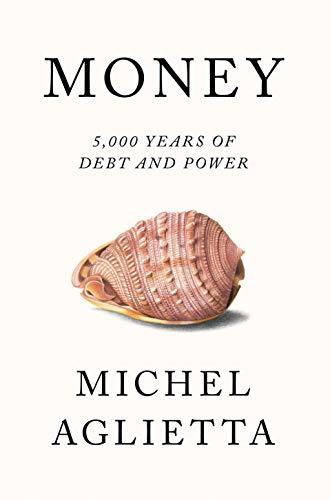
Money: 5,000 Years of Debt and Power
by
Michel Aglietta
Published 23 Oct 2018
It became apparent, ultimately, that the existence of a debt issued for the purposes of settling all the other debts was the necessary condition for the integrity of the payments system. This makes up part of the set of rules that constitute the payment system, as set out in Chapter 1. Nonetheless, Bagehot’s doctrine of a ‘lender of last resort’ did not address the Bank of England’s full range of social responsibilities. Its role as a settlement agent in the payment system made its discount rate the crucial variable in the money market. Yet this did not itself indicate how its Bank rate ought to be handled. The central bank cannot effectively play its role during crisis situations if it is not at the centre of the payment system during normal times.
…
Exchanges are decentralised, but at the same time they have a unity. This owes not to prices, but to the flows of money that circulate between accounts. The bookkeeping of the system records the memory of all the exchanges made during a given period of time, by way of the payment system. This latter is designed in such a way that the entire economy forms an integrated whole. Later on, when we study the payment system, we will see how the coordination of the whole economy is realised through the finality of payments. This involves using money to settle the debts resulting from exchanges in a given period, or else deferring them over time in the form of financial assets and commitments.
…
If all debts had to be settled simultaneously, society would disappear. That is why we can only properly understand money’s social nature by addressing the question of the payment system, through which the settling of debts takes place. Whoever speaks of ‘debt’ in a market society is referring to a constraint on the solvency of whoever bears that debt. It is money that clears a debt or defers it in time in a manner that society recognises as legitimate. It is the payment system that makes this social constraint operational. The logic of debt validation – the settlement obligation – operates independently of the reasons for the debts’ contraction.
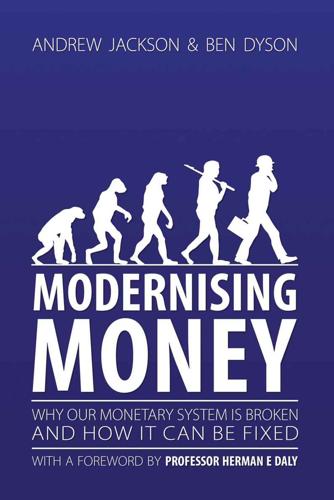
Modernising Money: Why Our Monetary System Is Broken and How It Can Be Fixed
by
Andrew Jackson (economist)
and
Ben Dyson (economist)
Published 15 Nov 2012
As the reforms would make the UK a fundamentally stronger economy, with less household debt, less exposure to banking crises, and a currency that will not be debased by the profit-seeking lending activities of commercial banks, there is no reason why any fall in the currency (as a result of panic) would be permanent. 10.4 Impacts on the payment system National security The stability and resilience of the payments system is a matter of national security. The former Chairman of the Federal Reserve Board, Alan Greenspan, has commented that: “We’d always thought that if you wanted to cripple the US economy, you’d take out the payment systems. Banks would be forced to fall back on inefficient physical transfers of money. Businesses would resort to barter and IOUs; the level of economic activity across the country would drop like a rock.”
…
Taken together, the reforms end the practice of ‘fractional reserve banking’, a slightly inaccurate term used to describe a banking system where banks promise to repay all customers on demand despite being unable to do so. In late 2010 Mervyn King discussed such ideas in a speech: “A more fundamental, example [of reform] would be to divorce the payment system from risky lending activity – that is to prevent fractional reserve banking … In essence these proposals recognise that if banks undertake risky activities then it is highly dangerous to allow such ‘gambling’ to take place on the same balance sheet as is used to support the payments system, and other crucial parts of the financial infrastructure. And eliminating fractional reserve banking explicitly recognises that the pretence that risk-free deposits can be supported by risky assets is alchemy.
…
Second, insolvency at one bank can lead to runs on solvent banks as depositors panic about their own bank’s position. The belief a bank is insolvent can become a self fulfilling prophecy, as a fire sale of assets reduces their value. Third, the payment system itself may be affected by bank insolvency: many banks do not have direct access to the high value payment systems, instead accessing them indirectly through a correspondent bank (known as a settlement bank). If the settlement bank became insolvent this could create problems in the payment system, as the ‘customer bank’ would not be able to make or receive payments. In addition, insolvency at either the customer or the settlement bank could lead to insolvency at the other bank.
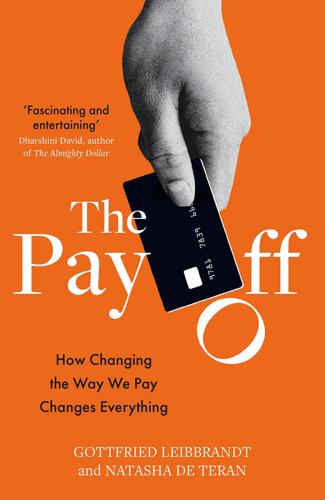
The Pay Off: How Changing the Way We Pay Changes Everything
by
Gottfried Leibbrandt
and
Natasha de Teran
Published 14 Jul 2021
Open access or closed loops: how payment networks compete for customers PART VII: POLITICS AND REGULATION 26. Who’s running the show? Rules and regulators 27. Europe gets a phone number: how EU regulators reshaped payments 28. How payments became weaponised 29. Follow the money: payment trails and the fight against financial crime 30. No way to pay: excluded from the payment system Epilogue: What’s next? Acknowledgements Sources Index AUTHORS’ NOTE Throughout the text we have mostly used the plural ‘we’ to reflect the fact that writing this book has been a joint endeavour. On occasion, we have written about specific incidents and personal examples: in those instances, the text switches to the singular ‘I’ to indicate the difference.
…
Without payments, money doesn’t work, and if it stops working, so too would (or, god forbid, will) our economies and societies. Think no food on the shelves, no petrol at the pumps, no power in the grid, and remember the words of American journalist Alfred Henry Lewis: ‘There are only nine meals between mankind and anarchy.’ Arguably it’s less the thin blue line and more the payment system that sits between us and a total breakdown of law and order. The richness and importance of payments make them worthy of interest at any time, but they merit particular exploration today because the ‘now’ in payments is far more exciting than it has ever been. Change is occurring fast – countries, indeed continents, are subverting customs almost overnight and money is pouring into the sector like never before.
…
Look at who your country identified as key workers during the Covid-19 lockdown and you’ll probably find payments staff are listed. Unless you live off-grid in splendid and completely self-sufficient isolation, you need to be able to pay and (most of us at least) need to be able to get paid. If access to the payment system is critical for everyone, then our modern, monetary-based societies have first to ensure that they have a good system and, second, that everyone has access to it. Later in this book, we’ll come to how those systems work and whether they’re doing a good job. While access to a banking system is seen as a crucial part of a country’s development and necessary for lifting people out of poverty, it is not as basic a need as the ability to pay.
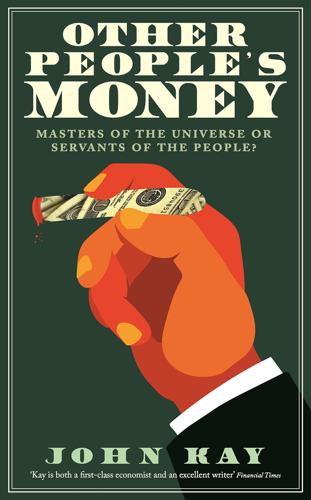
Other People's Money: Masters of the Universe or Servants of the People?
by
John Kay
Published 2 Sep 2015
Finance can contribute to society and the economy in four principal ways. First, the payments system is the means by which we receive wages and salaries, and buy the goods and services we need; the same payments system enables business to contribute to these purposes. Second, finance matches lenders with borrowers, helping to direct savings to their most effective uses. Third, finance enables us to manage our personal finances across our lifetimes and between generations. Fourth, finance helps both individuals and businesses to manage the risks inevitably associated with everyday life and economic activity. These four functions – the payments system, the matching of borrowers and lenders, the management of our household financial affairs and the control of risk – are the services that finance does, or at least can, provide.
…
In the USA intermediation through securities markets is far more extensive, and many activities are funded through bonds and equity. The UK, as often, lies somewhere in between the two. The remainder of this chapter is concerned with the functioning of the deposit channel (and the payment system that is inextricably linked to it), while Chapter 7 reviews the operation of the investment channel. The payment system Money often costs too much. Ralph Waldo Emerson, The Conduct of Life, 1860 Paul Volcker, the tall, laconic figure who preceded Alan Greenspan as chairman of the Federal Reserve Board, has been reported as saying that the only useful recent financial innovation was the ATM.4 Volcker is deeply sceptical of the developments in wholesale financial markets that excited the celebrants at Jackson Hole.
…
This difference in historical evolution – a difference not only in the development of the payment system but also in the evolution of the financial system as a whole – is the primary reason why financial networks have repeatedly proved so much less stable than other infrastructure networks. Nassim Taleb has explained how system fragility creates profit opportunities, so that this instability serves the interest of many market participants.6 I will return to these issues of system design in Chapter 10. In Britain, and in most European countries, the payment system is controlled by a consortium of banks. When you write a cheque or make an electronic payment through the internet or via an automated transfer, your payment is aggregated in a clearing system with all other payments made by your bank and offset against the total of payments that your bank receives from other banks.

Broken Markets: A User's Guide to the Post-Finance Economy
by
Kevin Mellyn
Published 18 Jun 2012
Otherwise, the very fact that someone is willing and able to bail them out of the consequences of risky behavior in fact provides incentives to the private-sector banks for that behavior—a concept knows as a moral hazard, as mentioned previously. The second key reason why some degree of financial regulation is legitimate is that deposit money in banks forms the basis of the payments system. Payments system is an arcane term for all the institutions and mechanisms that allow one person or organization to transfer monetary claims to another. Wire transfers, checks, and plastic cards all play a role in the payments system, as does paper money.There are many parties involved, including consumers, merchants, utilities and other billers, and key infrastructure such as ATM switches and clearinghouses.
…
In other words, the banking system is ultimately a big spreadsheet or ledger on computers recording numbers representing the claims on deposit money which everyone in society owns at a given point in time. The payments system moves these blips of data around within a given banking system and also between banking systems worldwide. It is one of those things, such as power and electric light, that we take for granted until they fail to go on when we flick the switch. The government has an interest in seeing that doesn’t happen because commerce on Main Street would grind to a halt instantly if the payments system ceased to function. Broken Markets The regulation of deposit taking and the regulation of payments systems are deeply intertwined.
…
The private banks there did not use a single public bank, because the only public bank was the Bank of England, their arch-competitor. So instead, all the other private banks swapped bills on each other in a clearinghouse (originally a tavern), which excluded the Bank of England, and settled up in cash. All the payments systems in the English-speaking world are basically extensions of this mechanism. From these simple pragmatic arrangements, something known as the payments system was born, but after four centuries it still revolves around the clearing and settlement of claims between banks in some type of clearinghouse. The exchange of claims—once paper bills and checks (a stripped-down form of a bill), or transfer instructions—is called clearing.
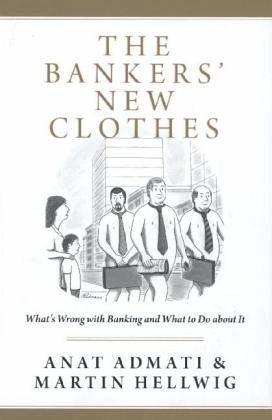
The Bankers' New Clothes: What's Wrong With Banking and What to Do About It
by
Anat Admati
and
Martin Hellwig
Published 15 Feb 2013
Because banks provide these services, depositors are willing to accept less interest than they might earn elsewhere.6 The convenience of the payment system is captured in Paul Volcker’s 2009 quip that the ATM had been the only useful banking innovation in the previous twenty years.7 Demand deposits and the payment system that is based on them make up an important part of the infrastructure of the economy, akin to a system of roads. If the payments system is efficient, transactions are cheap and easy to make and economic exchange works smoothly. If the payments system is bad, transactions are cumbersome and exchange is costly. By enabling transactions without the need for people to meet to exchange cash, banks contribute to the smooth working of the economy. Another core activity of traditional banks that brings visible benefits to the economy is lending.8 In the movie It’s a Wonderful Life, George Bailey is a hero because he uses the funds of the Bailey Building and Loan Association to allow the people of Bedford Falls to have better and cheaper housing.
…
How Banks Benefit the Economy Among the important services banks provide are those associated with deposits and the payment system. For depositors, it is important that banks make funds that were deposited readily available where and when the depositors want them. The checking accounts in which demand deposits are kept allow people to receive and make payments through checks, bank transfers, or the use of debit cards and credit cards. Because banks provide these services, depositors are willing to accept less interest than they might earn elsewhere.6 The convenience of the payment system is captured in Paul Volcker’s 2009 quip that the ATM had been the only useful banking innovation in the previous twenty years.7 Demand deposits and the payment system that is based on them make up an important part of the infrastructure of the economy, akin to a system of roads.
…
Given the prospect of government support for retail banks, the ICB wants to insulate these banks from the risks of activities such as speculating on the banks’ own accounts, participation in derivatives markets, or, more generally, investment banking.35 This approach has two weaknesses, however. First, protection of depositors and the payment system is not the only concern that might induce governments to bail out banks. Second, commercial banking activities can also be a source of risks that cause banks to fail unless they are bailed out. On the first point, we note that both Bear Stearns and Lehman Brothers were non-deposit-taking investment banks, AIG was an insurance company, and LTCM, seen as systemically important in 1998, was a hedge fund. None had depositors, and none was involved with the payment system, yet Bear Stearns, AIG, and LTCM were deemed sufficiently important to be kept out of bankruptcy for fear that otherwise they might seriously damage the rest of the financial system.
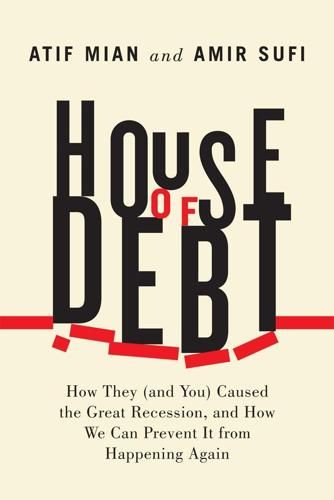
House of Debt: How They (And You) Caused the Great Recession, and How We Can Prevent It From Happening Again
by
Atif Mian
and
Amir Sufi
Published 11 May 2014
For insolvent banks, if the government is acting appropriately, long-term creditors and shareholders of the bank will be wiped out. This leads to the primary policy lesson of bank support: To prevent runs and preserve the payment system, there is absolutely no reason for the government to protect long-term creditors and shareholders of banks. Resuming the Flow of Credit Support for the banks in the United States during the Great Recession went far beyond protecting the payment system. Indeed, government policies took money from taxpayers and gave it directly to the creditors and shareholders. Pietro Veronesi and Luigi Zingales estimated that the equity injections into large financial institutions by the Treasury in the fall of 2008 increased the value of bank debt and equity by $130 billion.12 Bryan Kelly, Hanno Lustig, and Stijn Van Nieuwerburgh examined options on bank stocks and indices, and found that “a collective government guarantee for the financial sector” helped significantly boost the price of bank equity.13 So while any policy that would have helped home owners was shelved, governments bailed out bank creditors and shareholders using taxpayer money.
…
Or, according to Bernanke, bank failures caused lending to collapse, which drove the Great Depression.15 Notice the difference between the two independent reasons to support the banking system. In the first, depositors and the payment system must be protected. This does not require any assistance to long-term creditors or shareholders of banks. In fact, it is possible to completely wipe out shareholders and long-term creditors while preserving the integrity of the payment system. The FDIC has done this many times. But in the second, bank creditors and shareholders must be protected because banks have a unique ability to lend. Did the Bank-Lending Channel Cause the Great Recession?
…
If the losses are so large as to jeopardize depositors, then the government steps in, guarantees depositors’ money, and closes down the bank. Depositors are saved, but equity and subordinated debt are wiped out. Lender of Last Resort The primary justification for protecting the banking system is based on the role of deposits in the payment system. Deposits are not just a bank liability; they are the means of settling transactions in the economy. Further, depositors can pull out their money at any time they want. If the value of banking assets falls, spooked depositors may all demand their money when they sense the bank is in trouble—a bank run.
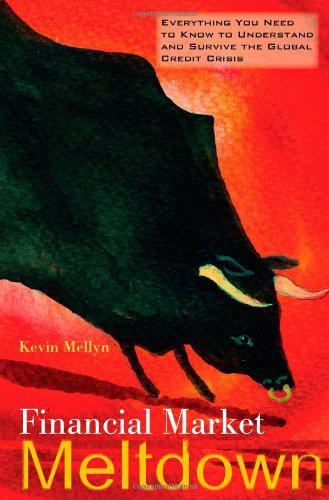
Financial Market Meltdown: Everything You Need to Know to Understand and Survive the Global Credit Crisis
by
Kevin Mellyn
Published 30 Sep 2009
In fact, these costs account, directly or indirectly, for the bulk of operating expenses of most banks. The Payments System The technical term for all the methods for moving around deposit money between those who buy stuff—‘‘payors’’ in bank-speak—and those who are paid for stuff—‘‘payees’’ in bank-speak—is ‘‘the payments system.’’ Without an effective, reliable payments system that makes deposit money usable in daily life, nobody would use it at all. So, banking is really the business of deposit taking, and deposit taking is based on the payments system. Deposit money in banks gets its ‘‘use value’’—the real reason we use it at all—from its role as the basis of payment, the ability to swap money for other stuff.
…
If you borrowed the same money from a lender who wasn’t a bank, they in turn would have to borrow that money from the money market or from a bank. They couldn’t just create it by extending your credit. Clearing and Settlement Access to the books of the central bank also amounts to a monopoly position in the payment system. All payments in deposit money ultimately get settled up between banks through their accounts on the books of central banks. These accounts are the balance point upon which a giant mountain of payments rest. For example, during the month you may deposit a paycheck, get an insurance payment via the ACH, make a half dozen credit card payments, write ten checks, and use your ATM card for cash four times and four times at the store.
…
This way, a very small amount of deposit money at the Federal Reserve supports a vastly larger volume of payments in deposit money between banks and then with customers. The actual amount of money passed around is mind numbing. WHY BANKS ARE SPECIAL As we said previously, the United States produced about $13 trillion in goods and services in 2007. That is a very big number. However, it is dwarfed by the annual turnover in the payment system. In 2007, Americans paid each other $83 trillion in the ‘‘real economy.’’ Because most daily payments we make are quite small and we make many of these small payments, over 340 billion transactions took place. All but about 100 billion of these payments used paper money and coins, but these ‘‘cash’’ transactions accounted for only one dollar in sixteen of turnover.
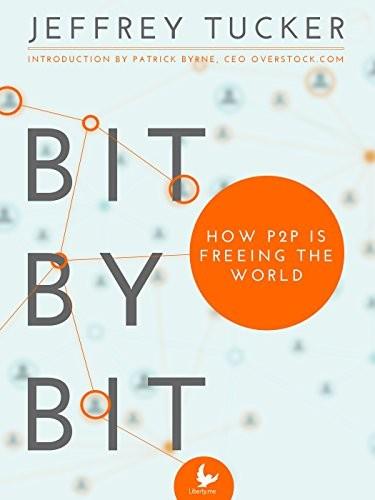
Bit by Bit: How P2P Is Freeing the World
by
Jeffrey Tucker
Published 7 Jan 2015
Perhaps the demand for bitcoin overcame the demands of Mises’ scenario because of a desperate need for something other than the dollar. As time passed—and I read the work of Konrad Graf, Peter Surda, and Daniel Krawisz—finally the resolution came. I will cut to the chase and reveal it: Bitcoin is both a payment system and a money. The payment system is the source of value, while the accounting unit merely expresses that value in terms of price. The unity of money and payment is its most unusual feature, and the one that most commentators have had trouble wrapping their heads around. We are all used to thinking of currency as separate from payment systems.
…
But payment systems, third parties, and trust relationships become necessary once you leave geographic proximity. That’s when companies like Visa and institutions like banks become indispensable. They are the application that makes the monetary software do what you want it to do. The hitch is that the payment systems we have today are not available to just anyone. In fact, a vast majority of humanity does not have access to such tools, which is a major reason for poverty in the world. The financially disenfranchised are confined to only local trade and cannot extend their trading relationships with the world. 24 A major, if not a primary, purpose of developing bitcoin was to solve this problem.
…
The protocol set out to weave together the currency feature with a payment system. The two are utterly interlinked in the structure of the code itself. This connection is what makes bitcoin different from any existing national currency, and, really, any currency in history. Let Nakamoto speak from the introductory abstract to his white paper. Observe how central the payment system is to the monetary system he created: A purely peer-to-peer version of electronic cash would allow online payments to be sent directly from one party to another without going through a financial institution. Digital signatures provide part of the solution, but the main benefits are lost if a trusted third party is still required to prevent double-spending.
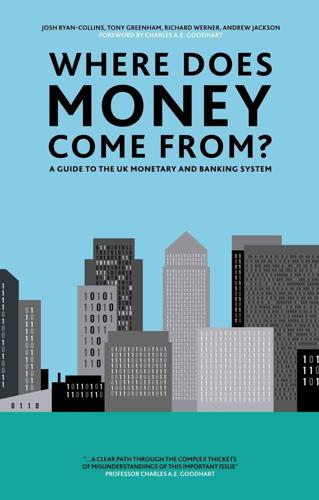
Where Does Money Come From?: A Guide to the UK Monetary & Banking System
by
Josh Ryan-Collins
,
Tony Greenham
,
Richard Werner
and
Andrew Jackson
Published 14 Apr 2012
The latter half of the chapter reviews the emergence of modern credit money in the UK, from fractional reserve banking, bond-issuance, creation of the central bank, the Gold Standard and deregulation to the emergence of digital money in the late twentieth century. Chapter 4 outlines in simple steps how today’s monetary system operates. We define modern money through the notion of purchasing power and liquidity and then set out how the payment system works: the role of central bank reserves, interbank settlement and clearing, cash, deposit insurance and the role of the central bank in influencing the money supply through monetary policy. This chapter includes a section on the recent adoption, by the Bank of England and other central banks, of ‘Quantitative Easing’ as an additional policy tool.
…
In particular, we need to understand that there are some constraints on the quantity of credit that banks can create even though they effectively have a licence to create new money. The next two chapters provide a detailed overview of the way that commercial banking works today in the UK and how it interacts with the central bank, the payment system and the money markets. To start, we need to address the concept of liquidity. 4.1. Liquidity, Goodhart’s law, and the problem of defining money In Section 3.1, we saw that acceptability as a means of exchange and of final settlement were key functions of money. History suggests that one useful way of judging acceptability of money is whether you can use it to pay taxes and, more generally across the economy, to buy goods and services.
…
What makes a currency unique in character and distinct from other currencies is that its different forms (central bank money and commercial bank monies) are used interchangeably by the public in making payments, not least because they are convertible at par.7 In the next sections, we go through the credit creation process by private banks and the relationship between private banks, the central bank and the payment system. 4.2. Banks as the creators of credit money A customer, whom we’ll call Robert, walks into a branch of Barclays Bank and asks to borrow £10,000 for home improvements. Barclays makes a check of Robert’s income and evaluates his credit rating, and decides that he can be relied upon to keep up repayments on the loan.
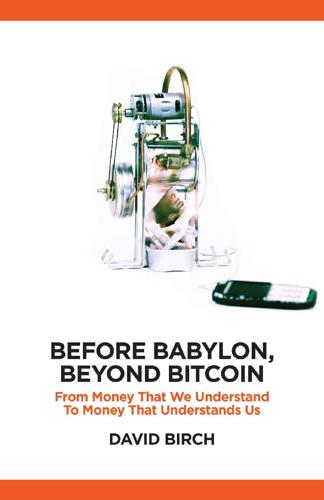
Before Babylon, Beyond Bitcoin: From Money That We Understand to Money That Understands Us (Perspectives)
by
David Birch
Published 14 Jun 2017
Since 1996 these accounts have been held within the Bank’s Real Time Gross Settlement (RTGS) system, which provides for real-time posting, with finality and irrevocability, of debit and credit entries to participants accounts (see the Bank’s guide online at http://bit.ly/2miUEzL). This system, which is an element of vital national infrastructure, is used for several purposes. It is used settle for the Clearing House Automated Payment System (CHAPS) in real time. It is also used for real-time settlement of the payment system embedded within the CREST securities settlement system. It is used to settle several times per day on a deferred net basis for the Faster Payments Service (FPS). And it is also used to settle on a deferred net basis for a variety of other retail payment systems (BACS, Cheque & Credit, LINK and Visa).
…
If Chinese criminals can produce one for half a cent, ship it to the United States in a container and make a profit of 0.2 cents on it, why not let them? Exchange without banks One interesting building block for our emerging narrative is the role of institutions in general and, specifically, the role of banks. It is not surprising that the payments system naturally evolved to emphasize transfers of claims on banks (such as cheques) as an alternative to cash payment. However, the term ‘naturally’ in this instance does not mean ‘inevitably’ (Roberds 1997). Not only is there a theory that says that economic life can continue without retail banks, there are practical examples of it happening.
…
Stefan Brands, a leading cryptographer and one of the pioneers of digital currency, describes Bitcoin as ‘clever’ and is loath to denigrate it, but he believes that, fundamentally, it is structured like ‘a pyramid scheme’ that rewards early adopters (Wallace 2011) – a charge also levelled by other observers of the financial markets (Robinson 2014). Whether this is true or not, there is no clear evidence that Bitcoin (despite the media attention) is being used at all. While the public debate around Bitcoin has, from the earliest time, focused on the supposed anonymity of the payment system and therefore its use for black market purchases (Greenberg 2011), detailed analysis of data from the Bitcoin system by the Federal Reserve has shown that it has barely been used at all for payments for goods and services (let alone for guns and drugs), and further that the pattern of circulation of Bitcoins and the dynamics of the exchange rate are consistent with low usage of Bitcoin for retail transactions (Badev and Chen 2014).
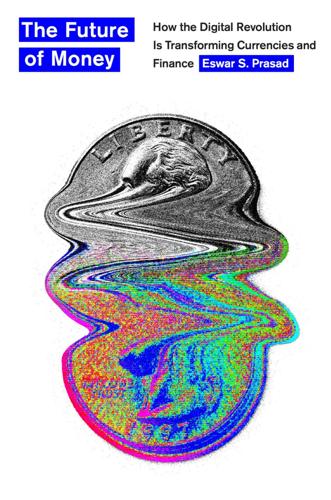
The Future of Money: How the Digital Revolution Is Transforming Currencies and Finance
by
Eswar S. Prasad
Published 27 Sep 2021
The report highlights the concern that an almost cashless society would leave households with little opportunity to save and pay with risk-free central bank money, a situation the Riksbank fears could ultimately lead to a decline in the resilience of the payments system. The report adds that “an e-krona would give the general public access to a digital complement to cash guaranteed by the state and several payment services suppliers could connect to the e-krona system.… By functioning independently from the infrastructure used by the commercial bank system, the e-krona system could also make the payment system more robust in the event of disruptions to, for instance, the system for card payments.” Privately managed payment systems might well be more efficient, cheaper, and safer than using cash.
…
The distinguishing features of these payment systems include their enormous scale (usually attained in a short period of just a few years), low costs, efficiency, and integration across multiple commercial platforms. In what is becoming a familiar pattern, some of the most remarkable innovations come from China. China’s Retail Payment Transformation In 2004, Alipay was created as the payment system for the online retail platform Taobao. At that time, when online commerce was in its infancy in China, the lack of trust between online buyers and sellers was a major impediment. Alipay was designed as a third party that would hold the money paid by a buyer and release it to a seller only after the buyer confirmed receipt of a product in good condition.
…
Loading money onto a phone app that could be used for retail payments might be more convenient, and perhaps also safer, than carrying around cash. Thus, e-money is not that different from using one’s PayPal or Venmo account balance, or even commercial bank deposits, for making digital payments, except that the payment system is managed by the central bank, and payments are made using central bank money. A second, more technologically sophisticated, version is referred to as an account-based CBDC (or, in the Riksbank’s terminology, a register-based CBDC). In this incarnation, individuals and businesses would have access to central bank accounts.

Swimming With Sharks: My Journey into the World of the Bankers
by
Joris Luyendijk
Published 14 Sep 2015
Not only are hundreds of millions of lives, cars and holidays insured, but also ships, coal power plants, footballers’ legs and financial products. Insurance partly overlaps with banking, the second huge area of finance. The biggest players here are so-called commercial or retail banks. They offer insurance products – hence the overlap – but generate most of their revenues from activities that our grandparents would still recognise: the payment systems, savings accounts, mortgages and loans to small and medium-sized companies as well as major corporations and institutions. ‘Commercial’ is where the project finance banker works who loved driving through the country thinking, ‘That is my toll bridge.’ As my interviewees pointed out, commercial banks are fundamentally different beasts to investment banks.
…
The list of parties to blame is in fact considerably longer yet two things already stand out. First, ‘the bankers’ were clearly not the only ones responsible. Second, most people working in the banks, as well as entire areas of ‘finance’, had absolutely nothing to do with all of this. Most commercial bankers were filling their days operating the payment system, or financing the construction of an oil rig, or dreaming up a new type of savings account for children under the age of twelve. The vast majority of accountants were at work auditing the books of energy companies, technology firms or government institutions, while the overwhelming majority of credit raters were studying the financial health of countries or corporations, far removed from financial products.
…
In the crash of 2008, investment bankers at megabanks were found to be speculating with the savings that ordinary citizens had entrusted to the commercial division of that megabank. So have megabanks now been forced to break themselves up into two different parts – the high-risk investment division and the more traditional commercial division, which contains everyone’s savings accounts and the payment system? Not at all, there is merely going to be an ‘electrified ring fence’ between the two arms – at least in the UK, and not now but in a few years’ time. Meanwhile the banks themselves have never offered full access to their staff to be interrogated about what went wrong and why, nor have banks said: we are kicking out everybody who in the recent past gambled with our capital buffers or our reputation.
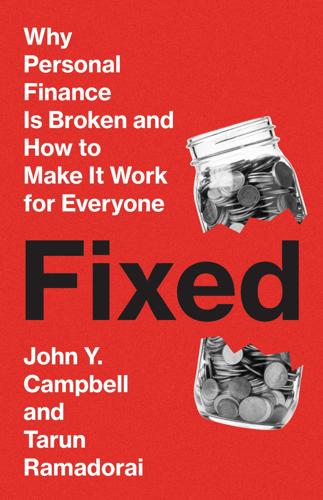
Fixed: Why Personal Finance is Broken and How to Make it Work for Everyone
by
John Y. Campbell
and
Tarun Ramadorai
Published 25 Jul 2025
A good place to start is with the six functions of finance listed by economists Robert Merton and Zvi Bodie: facilitating payments, dividing large assets into small pieces and repackaging them, transferring resources over time, managing risk, providing information, and giving people the right incentives.7 The payments system is the oldest and most basic function of finance. Once a society moves beyond barter and starts to use money, it becomes natural to record transactions in a system of accounts in order to keep track of who owns what.8 While it is easy to take the payments system for granted, disruptions to it can do immense damage.9 Despite the importance of this subject, it is specialized and technical and could easily fill a book by itself, so in this book we leave it to one side in order to focus on other functions of finance that are central to our concerns.
…
Comparison websites such as Compare the Market in the United Kingdom, Nerd Wallet in the United States, Policy Bazaar in India, and Kakaku.com in Japan have made it easier for consumers to quickly find and compare suitable auto, medical, or life insurance products. On many of these sites, consumers can also generate tailored alerts when prices decline and quickly switch providers to lower their costs with minimal hassle. One area of finance that falls outside the scope of this book, but where technological innovation is perhaps fastest of all, is the payments system. Some examples of payments systems that have been newly established or radically transformed in recent years include banks’ internal accounts; interbank payments systems, including ACH transfer, wire transfer, and SWIFT; mobile banking platforms such as M-PESA; personal transactions services such as Zelle and Venmo; the QR-code-based payments systems in China such as Alipay and Tencent; high-tech electronic payments in India backed by the Unified Payments Interface (UPI); and, of course, cryptocurrencies.
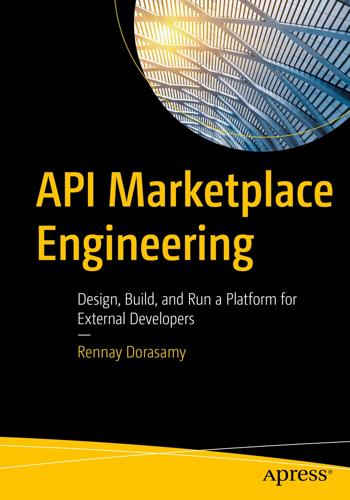
API Marketplace Engineering: Design, Build, and Run a Platform for External Developers
by
Rennay Dorasamy
Published 2 Dec 2021
Alternate payment methods could also result in lower card transaction costs. Open Banking has the potential to eliminate various fee elements of card transactions that are part of merchant service charges from the issuing banks, processors and schemes, which is also a benefit for customers. The payment system benefits from increased competition as the levelled playing field will potentially bring innovative payment solutions. Open Banking can enhance the transparency of payment flows by removing fake and fraudulent third-party providers and building technical and data-sharing standards. It also allows a more efficient infrastructure that underpins payments that are efficient for clearing and settling transactions.
…
Merchants may have to contend with the exposure to reputational risk if customers lose their data or payments are intercepted, third parties not able to honor financial obligations and transactions originating from fraudulent activity. Payments systems may be subject to operational risk in the event of a system malfunction, human error, and cyberattacks. This may affect integrity and confidence in the payment system. Access to banking APIs may allow more third parties to sort-at-source which reduces interbank clearing, which will impact interbank clearing houses. Prescriptive, Facilitated, or Market-Driven Approaches Some countries have taken a prescriptive approach of mandating banks to share customer-permissioned data and requiring third parties that want to access such data to register with regulatory or supervisory authorities.
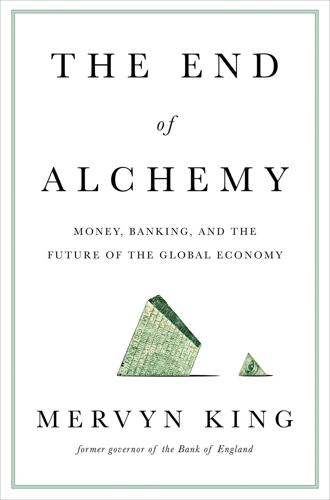
The End of Alchemy: Money, Banking and the Future of the Global Economy
by
Mervyn King
Published 3 Mar 2016
Bagehot would have been used to banks with leverage ratios (total assets to equity capital) of around six to one.11 In the years immediately prior to the crisis, leverage in the banking system of the industrialised world increased to astronomical levels.12 How did banks find themselves in such a precarious position? Without a banking system our economy would grind to a halt with people unable to receive wages and salaries, pay bills, service loans and make other transactions. Banking is at the heart of the ‘payments system’. As with the supply of electricity, its importance to the economy is much greater than is reflected in the number of its employees or its contribution to GDP. Because of its critical role in the infrastructure of the economy, markets correctly believed that no government could let a bank fail, since that would cause immense disruption to everyone’s ability to make and receive payments.
…
Creditors were willing to lend to banks at lower interest rates than would otherwise have been on offer because they were confident – correctly as it turned out – that even if things went wrong taxpayers would see them right. When all the functions of the financial system are so closely interconnected, any problems that arise can end up playing havoc with services vital to the operation of the economy – the payments system, the role of money and the provision of working capital to industry. If such functions are materially threatened, governments will never be able to sit idly by. Institutions supplying those services are quite simply too important to fail.13 Everyone knows it. So highly risky banking institutions enjoy implicit public sector support.
…
Those advantages of size relate to the composition of the banking sector and its concentration. There are three reasons to believe that, before the crisis, the banking sector as a whole became too large. First, because bank deposits are used as money, their failure can prevent people paying bills and receiving wages, so undermining the payments system. That is why governments are unwilling to allow banks, other than small ones, to fail. Banks, as we have seen, are too important to fail. The implicit guarantee of bank liabilities amounts to an effective subsidy, allowing banks to raise finance more cheaply than other entities in the private sector.
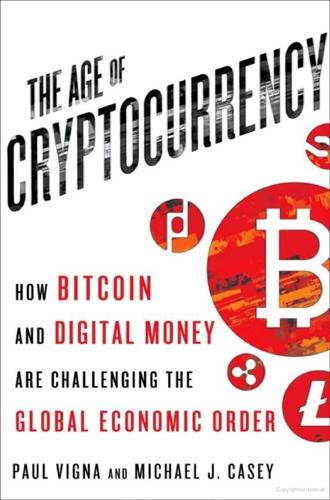
The Age of Cryptocurrency: How Bitcoin and Digital Money Are Challenging the Global Economic Order
by
Paul Vigna
and
Michael J. Casey
Published 27 Jan 2015
The bank tells its processor to give the all clear to the association, which conveys it back to the front-end processor so that Starbucks and the acquiring bank can be satisfied … for now. The cashier is notified of the approval via an “authorized” message that appears on the card-reader display. This long series of electronic communications has all occurred within seconds. You’re now walking down the street, cup in hand. But the payment system is far from being done with either you or Starbucks. For one, the café still hasn’t been paid for delivering the coffee. For that, it must send a follow-up request to its acquiring bank, usually in a batch of receipts at day’s end. The acquiring bank will pay the merchant for those receipts, but it will need to place a request for reimbursement from the issuing bank, using an automatic clearinghouse (ACH) network managed by either the regional Federal Reserve banks or the Electronic Payments Network of the Clearing House Payments Co., a company owned by eighteen of the world’s biggest commercial banks.
…
Evil attack and throw out hypothetical threats: a terrorist organization that wants to throw the Western world into chaos, a sovereign nation—Russia, perhaps, or China—whose monetary system is threatened by bitcoin, or a consortium of multinational banks seeking to protect their monopoly on the payment system. At close glance it seems unlikely. After all, these prospects become relevant only if bitcoin reaches enough penetration that its destruction would matter, and by that time attackers would need to part with much more than $1 billion, with every giant order for ASIC chips and mining equipment drawing attention to them.
…
A seamstress serving local markets in Dhaka, Bangladesh, can widen her product line if she can now send money to a fabric producer in Chittagong, 160 miles away. And if she can find foreign buyers willing to pay her in bitcoin, all of a sudden she has a means for taking in export revenues. While roads and other forms of infrastructure need to develop, too, bitcoin, in addressing the payment system, promises to tackle at least one flawed area of infrastructure. That could in turn drive change in the other areas by freeing up wealth to deal with them. Most important, communication technologies have come a long way in the developing world. Go to an Internet café in a dusty altiplano town in Bolivia, the poorest country in South America, and you may well find the connection is faster than in most American or European homes.
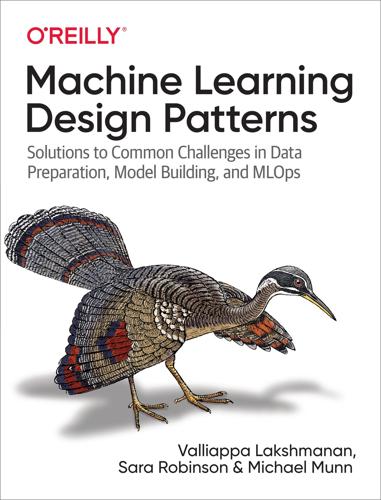
Machine Learning Design Patterns: Solutions to Common Challenges in Data Preparation, Model Building, and MLOps
by
Valliappa Lakshmanan
,
Sara Robinson
and
Michael Munn
Published 31 Oct 2020
Assume that one of the inputs to the model is the payment type. In the historical data, this has been recorded as “cash” or “card.” However, let’s say the payment system has been upgraded and it now provides more detail on the type of card (gift card, debit card, credit card) that was used. This is extremely useful information because the tipping behavior varies between the three types of cards. At prediction time, the newer information will always be available since we are always predicting tip amounts on transactions conducted after the payment system upgrade. Because the new information is extremely valuable, and it is already available in production to the prediction system, we would like to use it in the model as soon as possible.
…
Because the new information is extremely valuable, and it is already available in production to the prediction system, we would like to use it in the model as soon as possible. We cannot train a new model exclusively on the newer data because the quantity of new data will be quite small, limited as it is to transactions after the payment system upgrade. Because the quality of an ML model is highly dependent on the amount of data used to train it, it is likely that a model trained with only the new data is going to fare poorly. Solution The solution is to bridge the schema of the old data to match the new data. Then, we train an ML model using as much of the new data as is available and augment it with the older data.
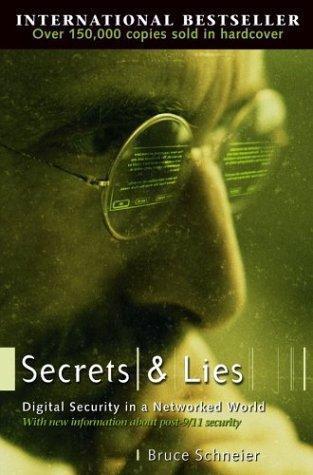
Secrets and Lies: Digital Security in a Networked World
by
Bruce Schneier
Published 1 Jan 2000
Disable or patch the vulnerable daemon(s)” Specifically, he suggests turning off logging and deleting log records of the compromise, and figuring out how often the system is maintained and administered, and how often the log files are analyzed. Hacker tools can automate a lot of the process. They’re not nearly as good as a virtuoso hacker, but they can turn an inept teenager into a formidable adversary. Another example: an attack against a smart card payment system. Step 1 is to gather whatever information is available on the payment system: design specifications, public interface documents, public information on the various algorithms and protocols used, and so forth. There is probably a lot of information out there, if you know where to look. Step 2 is to study the documentation, looking for a weakness. Part 2 of this book talks about all sorts of weaknesses that can affect a system like this.
…
The point here is that it’s not enough to break the smart card payment system, you need to convert that break into cash. Step 5 is cleaning up. You may want to destroy physical evidence of your attack. If you have equipment at home you used to complete the attack, throw it away. If you have computer evidence of your attack, delete the files. Maybe you can break into the payment system’s computers and destroy audit-log entries that could be damaging. Whatever it is, try to cover your tracks. Some attacks short-circuit these steps. For some publicity attacks, there are no Steps 2, 3, or 5. Here’s a publicity attack against the encryption algorithms used in digital cell phones: Step 1, get information on the cell phones’ cryptographic algorithms.
…
And there’s always the time-honored tradition of pulling a gun and shouting, “Give me all your pancakes.” There are probably even more possibilities, but you get the idea. Looking at this list, most of the attacks have nothing to do with the point where money changes hands. This is interesting, because it means that securing the payment system does not prevent illicit pancake stealing. It’s similar in the digital world. If this were a Web-based digital pancake store, most of the attacks would have nothing to do with the electronic payment scheme. There are many other areas of vulnerability. (Remember the beautiful Web page hack against shopping cart software from Chapter 10, where an attacker could change the price of an item to an arbitrary amount.
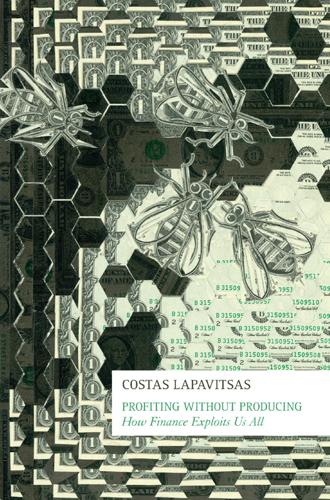
Profiting Without Producing: How Finance Exploits Us All
by
Costas Lapavitsas
Published 14 Aug 2013
Dorn (ed.), The Future of Money in the Information Age, Washington, DC: Cato Institute, 1996; Michael Latzer and Stefan Schmitz, Carl Menger and the Evolution of Payments Systems, Cheltenham: Edward Elgar, 2002; Randall S. Kroszner, ‘Currency Competition in the Digital Age’, in Evolution and Procedures in Central Banking, ed. David Altig and Bruce D. Smith, Cambridge: Cambridge University Press, 2003, pp. 275–305; Stefan W. Schmitz and Geoffrey Wood (eds), Institutional Change in the Payments System and Monetary Policy, London: Routledge, 2006. 41 Friedman has exaggerated the possible impact of continuous technological innovation, which could presumably lead to ever newer issuers of e-money proper, thus forcing the central bank into a race that it cannot win. However, the same possibility also exists with credit money, but in practice it has not come to pass.
…
Federal Reserve Bulletin, ‘Trends in the Use of Payment Instruments in the United States’, Spring 2005, pp. 180–201. Federal Reserve Bulletin, ‘The Use of Checks and Other Noncash Payment Instruments in the United States’, December 2002, pp. 360–74. Federal Reserve, ‘The Future of Retail Electronic Payments Systems: Industry Interviews and Analysis’, Staff Study 175, Federal Reserve Staff for the Payments System Development Committee, December 2002. Fernhald, John, and Shanthi Ramnath, ‘The Acceleration in US Total Factor Productivity After 1995: The Role of Information Technology’, Economic Perspectives 28:1, First Quarter 2004, pp. 52–67. Fieldhouse, David, The West and the Third World, Oxford: Blackwell, 1999.
…
Philip Arestis and Malcolm Sawyer, Aldershot: Edward Elgar, 2001, pp. 220–54. Sayers, R.S., Modern Banking, Oxford: Oxford University Press, 1938. Schaps, David, The Invention of Coinage and the Monetization of Ancient Greece, Ann Arbor: The University of Michigan Press, 2004. Schmitz, Stefan W., and Geoffrey Wood (eds), Institutional Change in the Payments System and Monetary Policy, London: Routledge, 2006. Schor, Juliet, The Overworked American: The Unexpected Decline of Leisure, New York: Basic Books, 1992. Schumpeter, Joseph A., Capitalism, Socialism and Democracy, 5th ed., London: George Allen & Unwin, 1976. Schumpeter, Joseph A., History of Economic Analysis, New York: Oxford University Press, 1954.

The Shifts and the Shocks: What We've Learned--And Have Still to Learn--From the Financial Crisis
by
Martin Wolf
Published 24 Nov 2015
The ideas of the Chicago Plan for monetary and financial reform, or similar radical rearrangements, are, as Mervyn King argues, also intellectually compelling: Another, more fundamental, example [of reform] would be to divorce the payment system from risky lending activity – that is to prevent fractional reserve banking … In essence these proposals recognise that if banks undertake risky activities then it is highly dangerous to allow such ‘gambling’ to take place on the same balance sheet as is used to support the payments system, and other crucial parts of the financial infrastructure. And eliminating fractional reserve banking explicitly recognises that the pretence that risk-free deposits can be supported by risky assets is alchemy.
…
Investors would have to accept substantial risk if they desired high returns. It would remain important to avoid the emergence of a shadow banking system able to destabilize economies. Thus, it would be crucial to curb excessive credit creation and maturity mismatches outside the banking system. That would continue to require regulatory oversight. But if the payment system were unquestionably safe, regulators might be able to be more relaxed than in the past about failure elsewhere. Long-Term Health – Challenges for the Eurozone Now turn to the challenges specific to the Eurozone. The crisis has raised questions about the longer-term institutional preconditions for a workable currency union.
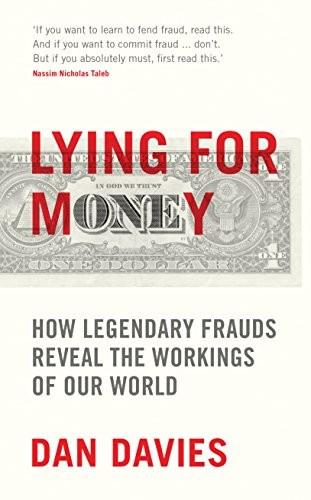
Lying for Money: How Fraud Makes the World Go Round
by
Daniel Davies
Published 14 Jul 2018
In the context of money laundering, the objective is to get cash transformed into a deposit held with a reputable bank. Once that objective has been achieved, the money is effectively ‘clean’ and can be spent or invested; a criminal may have other problems in explaining to the authorities how he is able to support a lifestyle well out of proportion to his honest income, but the payments system will not generate red flags. And the example of money laundering also demonstrates one way in which systems of mutual trust break down. Call it the ‘Trainspotting Problem’, after the novel and film in which heroin addicts shared needles and therefore ended up catching the same diseases. If the purpose of a trust system is to avoid the need for checking, then you need to take into account that when you allow a new entity into the circle of trust, you are also, implicitly, making the decision to trust everyone that they trust.
…
Waterlow & Sons had been around since 1810, but had missed out on the contract to print Bank of Poyais notes, which went to Perkins, Bacon & Co. * Nominally! The regional feds are owned by the banks in their area, and sometimes pay dividends out of the interest income they earn on various deposits required by the payment system. The shareholders have no rights of control any more, though. Do not think on this subject too hard – a morbid interest in the technical workings of the Fed is often an early symptom of being a victim of prime bank guarantee fraud. * Central bank governors’ signatures are not all that difficult to forge, because there tends to be a good-quality example on every banknote in circulation.
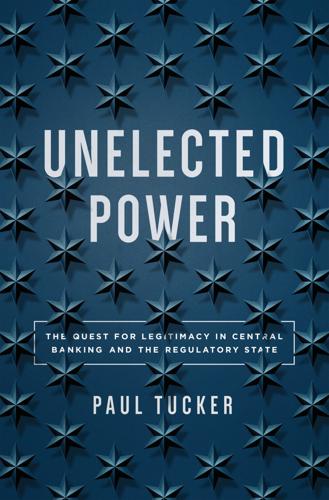
Unelected Power: The Quest for Legitimacy in Central Banking and the Regulatory State
by
Paul Tucker
Published 21 Apr 2018
This stemmed from (a) the Bank being recognized by the banking community as having private information and networks unavailable to others by virtue of being the operational pivot of the system (part IV), (b) the governor being drawn from that community, and (c) the community judging that it benefited from vesting the Bank with authority to use its information and its position at the center of the payments system to provide leadership in the interests of the system as a whole.8 That authority was emergent, in the sense that it evolved through custom and practice, after initial minority resistance from some private banks.9 Up to a point, it held within those parts of the City that came to rely on the Bank’s banking facilities, and, in origin at least, involved a degree of community consent in the choice of governor.
…
The other regards them as independent authorities delegated specific responsibilities and formally insulated from day-to-day politics. Both models rely on expertise but call upon it in markedly different ways. Under the first, the central bank’s functions are determined by technocratic comparative advantage rooted, as Francis Baring observed two hundred years ago, in its being the pivot of the payments system, an elemental part of the services state, generating relationships across the banking community and imbuing a distinctive central banking “know-how” mind-set (see chapter 4 for the military analogy). Under the second, the central bank does only those things that have been formally delegated, irrespective of whether, across the state’s overall machinery, it might be best equipped to handle others.
…
Abstractly, we could conceive of a vector specifying, for a series of core financial services, that society would not tolerate a probability of greater than p of there being a reduction of x percent or more in the provision of service i. Thus, we might plausibly impose a probability of very close to 0 percent on a seizure of the payments system causing us to have to resort to barter (as happened in parts of the United States during the 1930s) but a slightly higher probability of a temporary interruption in bank lending or insurance. In practice, politicians need to decide (or bless) a basic resilience requirement for core intermediaries (constraints on their balance sheets and interconnectedness).
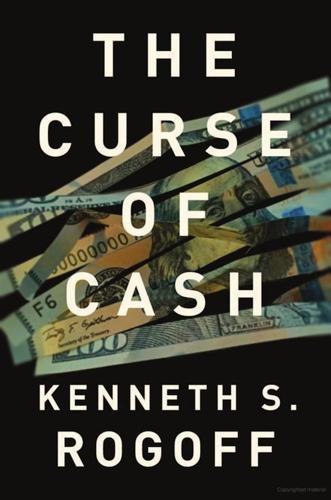
The Curse of Cash
by
Kenneth S Rogoff
Published 29 Aug 2016
Some of the present-day obstacles to improving security are really more political than economic. Some innovations in security, such as the potentially disruptive distributed-ledger technology embodied in cryptocurrencies like Bitcoin or Ethereum, may eventually lead to major improvements in financial security, at least at the core of the payment system, as discussed further in chapter 14. It is particularly hard to see in any of these arguments why large-denomination notes are important. Probably they would be looked on askance after a power outage, earthquake, or other kind of catastrophe. I won’t deny there are going to be residual issues that simply take time to sort out.
…
If the emergency negative interest rate situation is over, it might be desirable to bring the paper currency and the electronic currency exchange rate back to par (one to one). The government does not have to do this—it can leave the paper currency at 0.97, or it can just keep on pushing down the exchange rate for paper currency as a way to collect more seigniorage tax. However, it would certainly be convenient in terms of the payment system to bring the exchange rate back to one, especially if negative interest rate episodes are few and far between. Then, in normal times, the distinction between paper and electronic currency is not anything that anyone would have to worry about. Bringing the paper currency back to parity, however, is trickier than it seems.
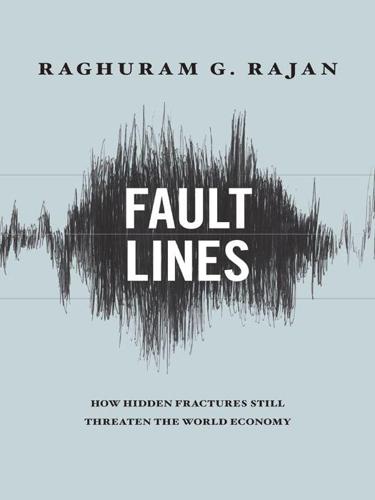
Fault Lines: How Hidden Fractures Still Threaten the World Economy
by
Raghuram Rajan
Published 24 May 2010
A well-diversified money-market fund invested in highly rated commercial paper and marked every day to market is almost as safe and should not experience the kinds of runs experienced by funds that were not marked to market during this crisis.20 Another important reason for insuring deposits was to ensure that the payment system would be relatively safe: unregulated, unsafe, uninsured entities could not pollute it and cause the system to freeze. But now that technological advances, such as real-time gross settlement payments, make it possible to protect the payment system from the failure of any payer, even this rationale is weak. Deposit insurance does help keep small, undiversified banks in business. To the extent that these small banks are important in making loans in the local community—to the local bakery or toy shop—they have some economic and social value.

The Blockchain Alternative: Rethinking Macroeconomic Policy and Economic Theory
by
Kariappa Bheemaiah
Published 26 Feb 2017
While the pricing in the existing system is governed by the member institutions, a lower entry barrier to becoming a transactions verifier in a CBDC environment would mean that more players would enter the payment services market and lower the price of transaction fees so that it is more representative of the cost of verification. Second, current payment systems are subject to operational risks. If a bank or payment institution were to shut down even temporarily, all payments need to be routed via other channels. This could in effect cut off the end user from the payment system till they find an alternative. However, with a Blockchain13-based model, this problem is avoided, owing to its distributed architecture. The real advantage in terms of payments is with reduced collateral and settlement sums. Currently, any payment involves risk: credit risk (in case the bank goes bust) and liquidity risk (in case one of the counterparties does not have assets that can be turned liquid in case of nonpayment).
…
Moreover, while some central banks already use an electronic equivalent to cash in the form of reserves (e.g., the Bank of England), these reserve accounts are only available to licensed commercial banks and a small number of financial institutions (Dyson and Hodgson, 2014). As a result, commercial banks have become the gatekeepers to the payments system, and have the capacity to become systematically important nexuses within the economy. As a result, new entrants, smaller banks, and other payment service providers have to enter the payments space via a licensed bank even if they are able to provide better payment services. Moving to a Blockchain-based payment infrastructure could provide a single solution to these multiple latencies and thus increase competition in the payments space.
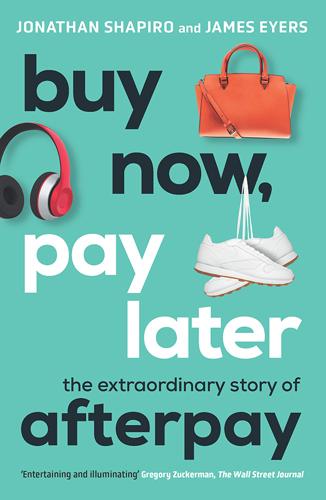
Buy Now, Pay Later: The Extraordinary Story of Afterpay
by
Jonathan Shapiro
and
James Eyers
Published 2 Aug 2021
But in the dawning era of cloud computing, the technology did not need to live on a physical terminal. It could be incorporated into mobile phone applications so customers could top up credit on their handsets remotely. TAFMO could also incorporate functions to manage fraud and chargebacks, or disputed sales, by cross-referencing a centralised database. This not only cracked open the payments system, but also levelled the playing field for new entrants. TAFMO was well ahead of its time. In the context of the enormous payments industry, it had the potential to become one of the most valuable pieces of technology Australia had ever produced. On a trip to Melbourne, Course met Adrian and Keith Cleeve.
…
And if the speeches weren’t enough, another government inquiry—to review the regulatory architecture of the entire payments system, including whether the Reserve Bank should continue to be the primary regulator—would hammer home Canberra’s wishes. As the Reserve Bank probed whether buy now, pay later providers should be able to keep stopping merchants from passing their costs on to customers, Treasury said on 21 October that it wanted to ensure the payments system ‘remains fit for purpose and is capable of supporting continued innovation for the benefit of both businesses and consumers’.1 A new review, which would run alongside the Reserve Bank’s own review of payments regulation, was designed to put the RBA back into its box, and it ruffled a few feathers at the top of Martin Place.
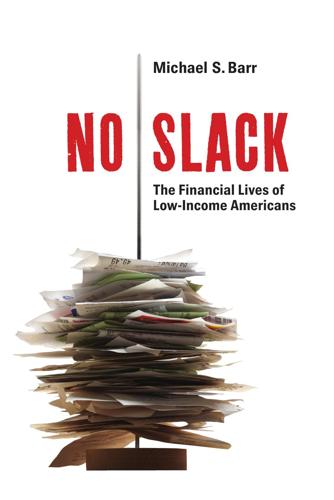
No Slack: The Financial Lives of Low-Income Americans
by
Michael S. Barr
Published 20 Mar 2012
Unlike the debit card that can be accessed with a PIN, payroll and prepaid debit cards are typically offered only through the MasterCard or Visa network and can generally be used at any retailer that is a part of these 1. For example, programs providing benefits to the poor could more efficiently transfer resources to the poor if LMI households were to receive funds and pay their bills using modern electronic funds transfer systems instead of checks that are expensive for the payment system to process and potentially subject to fraud. 12864-04_CH04_3rdPgs.indd 84 3/23/12 11:55 AM preferences for plastic 85 networks, by the consumer signing rather than entering a PIN. Each of these payment cards poses different costs and risks to the financial institution providing the card.
…
While cost was an important determinant of preference among survey respondents, so too were nonpecuniary factors; for example, households were especially concerned with whether the card had strong federal consumer protections and whether it had national branding. As to the government’s role, there may be ways that the government could help to accelerate changes in the payments system that benefit low- and moderateincome households and the market as a whole. Default arrangements—changing the rules—may help in this context because the providers of savings and transaction accounts have incentives to alleviate consumer biases, for example, with respect to procrastination, to gather deposits.

A First-Class Catastrophe: The Road to Black Monday, the Worst Day in Wall Street History
by
Diana B. Henriques
Published 18 Sep 2017
The Fed official was not alarmed; minor problems like this occurred frequently, and the Bank of New York was one of the busiest processing hubs in the government bond market. The New York Fed and the Bank of New York were both part of a massive electronic network that could fairly be called the nation’s financial circulatory system. Insiders called it “the payment system.” It was the banking industry’s modern equivalent of the “back offices” on which Wall Street once relied to send stock certificates to the right buyer and cash to the right seller. So-called “clearing banks” such as the Bank of New York served as the back office for legions of other financial firms and institutions engaged in Treasury trading and other complicated high-speed activity.
…
That development, he thought, was important chiefly to the despairing NYSE specialists, giving them enough hope to soldier on until the Dow rallied. 20. JUGGLING HAND GRENADES Alan Greenspan later recounted: Greenspan, The Age of Turbulence, p. 109. Greenspan cited this as one of “a half dozen near disasters, mostly involving the payment system,” that occurred in the days after Black Monday. He added, alarmingly, that a “senior Goldman official” later confided to him that if the firm had anticipated the “difficulties of the ensuing weeks, it would not have paid. And in future such crises, he suspected, Goldman would have second thoughts about making such unrequited payments.”

Eastern standard tribe
by
Cory Doctorow
Published 17 Feb 2004
The counterman kept his slips in the basement so that he could sit among them and see how his business had grown, every slip a person served, a ring on the till, money in the bank. Drivers on the MassPike who used traffic jams to download music from nearby cars and then paid to license the songs. Only they didn't. They circumvented the payment system in droves, running bootleg operations out of their cars that put poor old Napster to shame for sheer volume. Some people drove in promiscuous mode, collecting every song in every car on the turnpike, cruising the tunnels that riddled Boston like mobile pirate radio stations, dumping their collections to other drivers when it came time to quit the turnpike and settle up for their music at the toll booth.
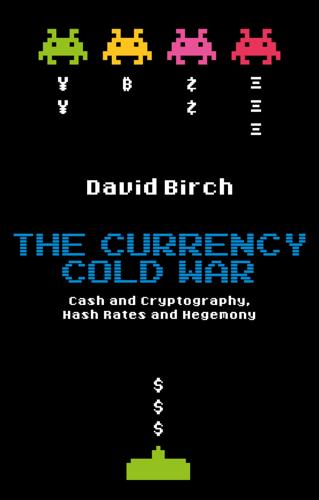
The Currency Cold War: Cash and Cryptography, Hash Rates and Hegemony
by
David G. W. Birch
Published 14 Apr 2020
When looking at the options for cash replacement and reflecting on experiences with population-scale schemes such as M-Pesa in Kenya, I come to the following conclusions. It seems to me that providing a good API on top of the system and allowing innovators to build new products and services on top of that is transformational and, to my mind, much more likely to lead to real innovation, making the payment system serve the wider economy more efficiently and more effectively. Inclusion A digital currency could improve financial inclusion. I do not want to get into the complexities of the relationship between financial inclusion and social inclusion, and I can be extremely boring when I get talking about the relationship between digital money and digital identity, but it is clear that the framework for digital currency must interact constructively with other regulatory frameworks such as Know Your Customer (KYC) and Anti-Money Laundering (AML).
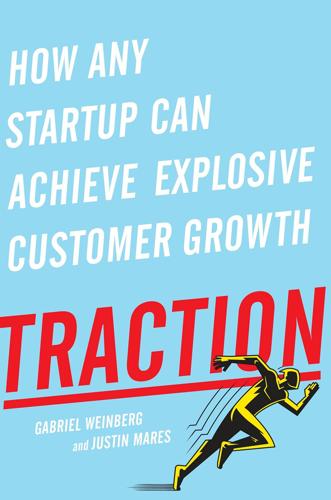
Traction: How Any Startup Can Achieve Explosive Customer Growth
by
Gabriel Weinberg
and
Justin Mares
Published 5 Oct 2015
PayPal, the leading online payments platform, used a similar strategy when it targeted eBay users as its first customers. In the beginning, PayPal itself purchased goods from eBay and required that the sellers accept payment through PayPal. This worked so well that PayPal proved more popular than the payment system eBay itself was trying to implement! This single-minded focus allowed PayPal to acquire a large percentage of people within one of the few groups of buyers and sellers that dealt with online payments at the time. CASE STUDY: EVERNOTE Since its founding, Evernote has focused on existing platforms as its core traction channel.
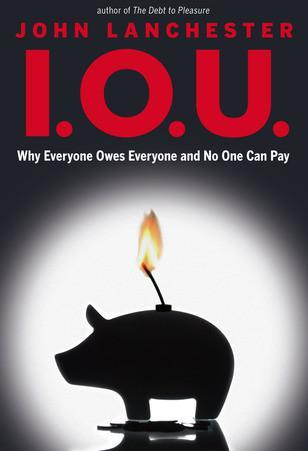
I.O.U.: Why Everyone Owes Everyone and No One Can Pay
by
John Lanchester
Published 14 Dec 2009
If I give you a check today and you pay it into your bank, the funds will clear out of my account tomorrow but won’t be credited to your account until three days later—if you’re lucky; it can take up to seven days. This is much too slow; but it’s okay because a government report, commissioned by Gordon Brown, has made stinging criticisms of the payment system and action has been promised. Cool! But wait! The report was published, and the promise of decisive action was made, in 2000, when Brown was chancellor of the Exchequer. Legislation and new regulatory bodies to enforce it have repeatedly been promised, but the problem has consistently been the industry’s reluctance to act, since this is change which does nothing to benefit banks’ profits—it benefits only customers.
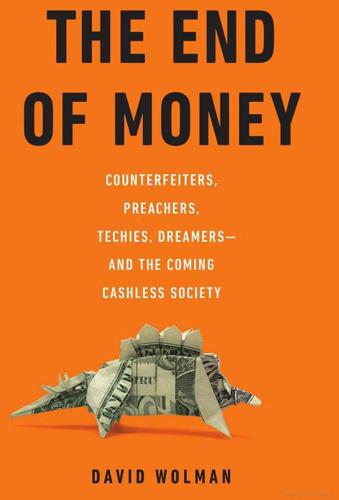
The End of Money: Counterfeiters, Preachers, Techies, Dreamers--And the Coming Cashless Society
by
David Wolman
Published 14 Feb 2012
Yet evidence supporting Guest’s fear about controlled commerce isn’t confined to such oddities. In the winter of 2010 the New York Times echoed this prophecy in an editorial about the decision by MasterCard, VISA, PayPal, and others to stop processing payments for Wikileaks: “A handful of big banks could potentially bar any organization they disliked from the payments system, essentially cutting them off from the world economy.” I tell Guest that I recently met with electronics experts at Hitachi in Tokyo, who are developing biometric devices for seamless transactions. One of these technologies uses the unique three-dimensional pattern of veins within every person’s fingertip.
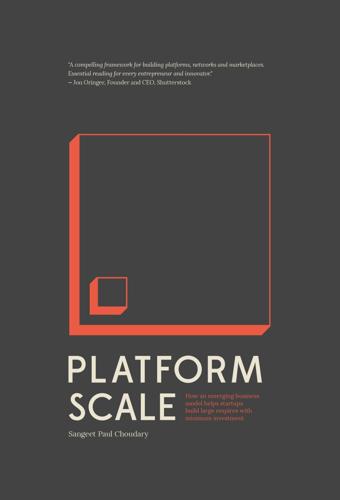
Platform Scale: How an Emerging Business Model Helps Startups Build Large Empires With Minimum Investment
by
Sangeet Paul Choudary
Published 14 Sep 2015
MPesa adopted this behavior, without trying to introduce new ones, and made it more efficient by tracking the movement of money. The user-agent relationship remained the same while the agent-agent relationship improved significantly. Instead of logging in transactions in a book and settling them at a later date, the payments system allows the agents to settle money transfers instantly, over the network. While reintermediating an existing payments business, mPesa brings in added efficiency to the transaction, without reinventing the end-user behavior. BACKWARD COMPATIBILITY AS A ROAD TO GRADUAL BEHAVIOR DESIGN Any form of payment has to combat a behavioral problem.
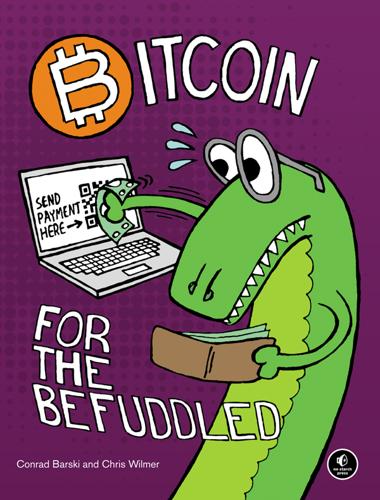
Bitcoin for the Befuddled
by
Conrad Barski
Published 13 Nov 2014
At that point, the Bitcoin network will be sustained entirely through transaction fees. The Complexity of the Bitcoin System Most of us are used to using centralized payment services (e.g., PayPal, credit cards). We place our trust in the companies that run those services and don’t need to know how the payment system works. But Bitcoin doesn’t have a company to trust; instead, we can examine the system to decide whether or not we trust it. If you investigated the system major credit card companies use to facilitate payments, you might be surprised by how complicated it is. Because we don’t normally think about how digital payment systems work, it is not unusual that the Bitcoin system is befuddling and complicated to most.
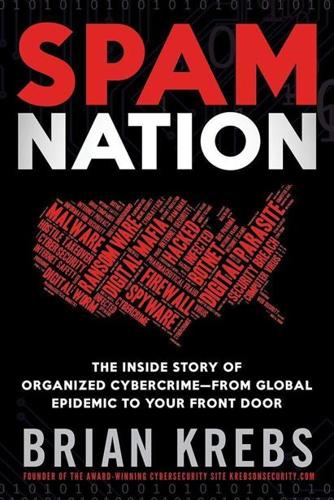
Spam Nation: The Inside Story of Organized Cybercrime-From Global Epidemic to Your Front Door
by
Brian Krebs
Published 18 Nov 2014
And most times, they’ll say, ‘Thank you very much,’ because they can get big fines for processing these miscoded transactions. And so if you tell them, they get to shut it down without Visa finding out and fining them.” Damon McCoy, assistant professor at George Mason University’s computer science department, said many pharmacy, scareware, and OEM software affiliate programs have responded to the payment system crackdowns by putting burdensome security measures in place to screen out test buys. For example, some rogue pharmacy programs—such as RxPayouts—began requiring buyers to send scans or faxes of their driver’s licenses and physical credit cards. Others have decided only to process payments for existing customers.
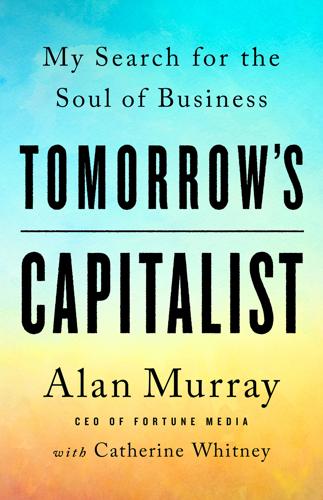
Tomorrow's Capitalist: My Search for the Soul of Business
by
Alan Murray
Published 15 Dec 2022
We have done things in six months that would have taken five to ten years.” He emphasized that the industry could “take the learnings of the last six months and apply them to other challenges, like cancer.” COVID-19 exposed multiple problems in the US health care system—the lack of surge capacity, the fragility of the financial model, and the vagaries of the payment system, to name a few. But it also sparked remarkable innovation. You could begin to see the unveiling of new ways of operating that would make health care better and more accessible after the pandemic. One clear example is telemedicine. Millions of people discovered that they could see their doctors and other medical professionals more often and more easily with web appointments.

The Making of Global Capitalism
by
Leo Panitch
and
Sam Gindin
Published 8 Oct 2012
This meant that many of the world’s largest banks faced insolvency, and not only led to a virtual halt in bank lending to developing countries but, by virtue of such high repayment risk in the interbank market, also threatened an imminent bank crisis in the advanced capitalist countries. The Fed developed a comprehensive strategy that radically expanded the superintendence of interbank repayment risk, focusing on how to inject liquidity into the payment system to “strengthen the international banks that had been severely weakened by the crisis.”101 The Fed took on the added short-term task of managing repayment and default risk by lending to commercial banks and restructuring bank debt at home, while the Treasury provided bridging assistance to the states negotiating with the IMF.
…
The cornerstone of the new policy regime promulgated by the BIS was the introduction of risk-based capital standards for international banking institutions. From the mid 1970s, Federal Reserve and Bank of England officials in particular expressed concern that the vulnerabilities created by low levels of tangible bank liquidity could erode public confidence in the payments system, and they used the Basel negotiations to explore ways to create a cushion against institutional risk. In December 1981, shortly after Britain introduced a capital-rating system for its banks, the US bank regulators, led by the Fed, established minimum capital adequacy ratios for banks and bank holding companies on the basis of size (such ratios had formerly applied only when new banks were opened).56 The seventeen largest bank organizations were initially given more leeway than other banks in adopting these ratios because of their very low existing capital-to-asset ratios and their fear of losing international competitiveness; but a 5 percent rule had been applied to the big banks even before the failure of Continental Illinois in 1984.
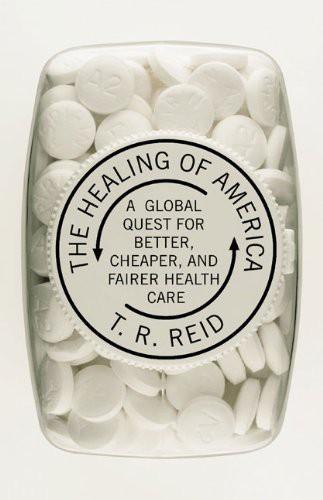
The Healing of America: A Global Quest for Better, Cheaper, and Fairer Health Care
by
T. R. Reid
Published 15 Aug 2009
Even a neighborhood doctor’s office, with three or four family physicians and four nurses, will have a corps of four to eight people in the back room just to handle the billing. Not surprisingly, one of the fastest-growing aspects of the American health care industry is the booming business for “compilers,” middlemen who compile the bills that doctors submit and then shuttle them through the payment system. This makes life easier for doctors, but at a price: It adds an extra level of complexity and yet another layer of bills to the overall cost of American medicine. The Wall Street Journal neatly summarized the general state of affairs in a cartoon that was thumbtacked to the wall in just about every American doctor’s office.
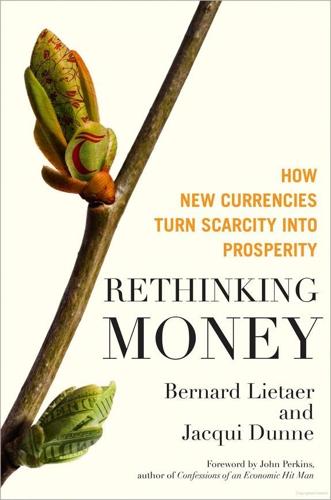
Rethinking Money: How New Currencies Turn Scarcity Into Prosperity
by
Bernard Lietaer
and
Jacqui Dunne
Published 4 Feb 2013
Data could be collected with sensors built into the biomass processor equipment. Such sensors could include an automatic satellite positioning mechanism that identifies the exact location at which the carbon credits are being generated. Furthermore, the carbon credits could be independently verified by satellite, tracer systems, and/or soil sampling. The payment system for CPX exchanges could use highly advanced payment technologies, more secure and cost-effective on a decentralized basis than those currently used in centralized credit or debit card payment systems. Corporate buyers of the credits in the CPX system would be able to bid for the carbon credits of specific groups of producers and could exchange the seeds, fertilizers, or equipment they produce for farmers’ carbon credits.
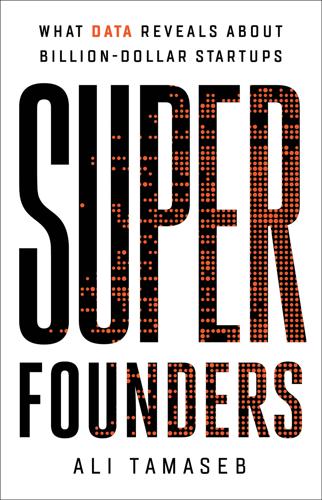
Super Founders: What Data Reveals About Billion-Dollar Startups
by
Ali Tamaseb
Published 14 Sep 2021
Neither did any of DoorDash’s co-founders. There’s a misconception that founders ought to have direct work experience in the industries they’re “disrupting.” For founders like Xu, that wasn’t the case. As a kid, Xu worked at his mother’s Chinese restaurant—washing dishes, busing tables, and occasionally fixing the payment system. But he didn’t have any professional work experience related to delivery operations and route optimization, the backbone of DoorDash’s success. DoorDash came out of a series of conversations in business school and a willingness to figure things out on the job. It turns out that a lot of billion-dollar startup founders, like Xu, also lack this kind of direct work experience in the industry they are disrupting.
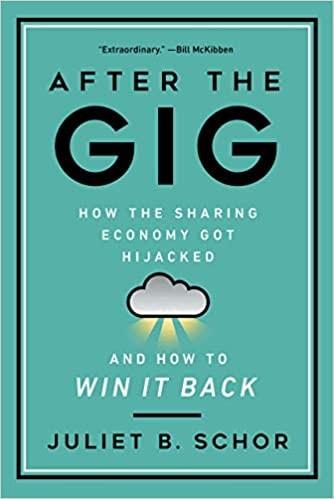
After the Gig: How the Sharing Economy Got Hijacked and How to Win It Back
by
Juliet Schor
,
William Attwood-Charles
and
Mehmet Cansoy
Published 15 Mar 2020
Postmates turns down candidates who have been convicted of some of the more serious criminal offenses, but does not exclude others. Written policies by most platforms are ambiguous. A catalog and discussion is provided by Armstrong (2018). On the barriers to employment for those with a criminal record see Pager (2007). 15. Solomon (2017). 16. Another platform feature is that the payment system is controlled via the app. Customers must use electronic payments, and earners receive their money cashlessly. This puts the monetary logistics “backstage” and separates them from the performance of the service. 17. There is a large legal literature on classification and misclassification.
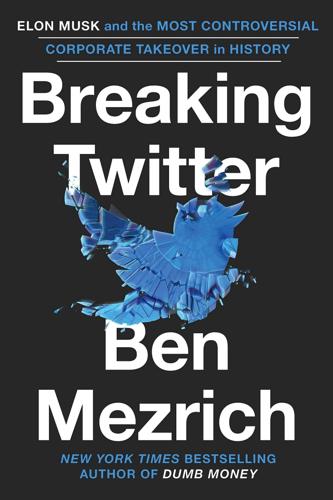
Breaking Twitter: Elon Musk and the Most Controversial Corporate Takeover in History
by
Ben Mezrich
Published 6 Nov 2023
Again, nobody at Twitter would have argued with Elon’s point—that bots and trolls were an issue—but then he advanced one possible solution that set the Slack channel on edge. “I have a thought in this regard,” he began. “If there was a little Twitter Blue authenticated, not like a celebrity, but authenticated by Twitter Blue payments. Piggybacking on the payments system to do authentication… Some authentication to my name, that means I’m probably not a bot or spam or someone operating hundreds of accounts. That’s like three dollars a month. I believe that would be helpful.…” Mark leaned back in his chair. If he had heard Elon correctly, Elon was talking about people paying for the Blue Checks that Twitter currently gave out to celebrities, journalists, politicians, and the like.
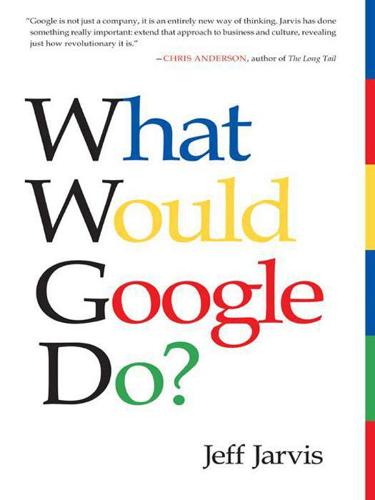
What Would Google Do?
by
Jeff Jarvis
Published 15 Feb 2009
Just as I was dotting the final i on this manuscript, Google announced that it would create the means for publishers and authors of out-of-print books to receive payment from readers who want access to the full text online (Google will keep 37 percent of the fees as commission). Google also may sell ads on pages with book content and share that revenue with publishers and authors. Sergey Brin told a Wall Street Journal blog that the payment system could be extended to video, music, and other media. This offer came in the settlement of a suit brought by publishers and authors fighting Google’s scanning of books—seven million to date—to make them searchable online. But it is far more than a sop to angry book people. In one fell swoop, Google altered the life cycle and economics of books and potentially answered some of their most pressing digital needs.
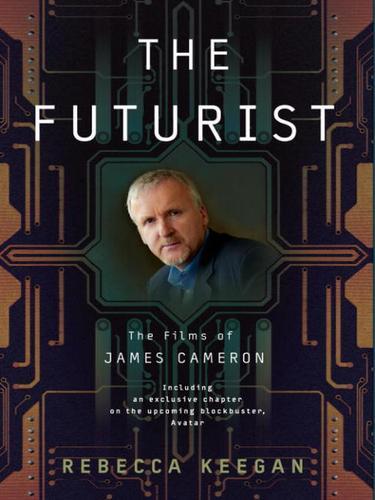
The Futurist: The Life and Films of James Cameron
by
Rebecca Winters Keegan
Published 3 Nov 2009
There’s a reason Cameron has spent much of his career without an agent. Next he reported to the production manager’s office. “He said, ‘OK, here’s your petty cash voucher. And here’s your coke and here’s your black beauties,’” Cameron says. It was January 1980. “I said, ‘What’s this for?’ He said, ‘Well, this is for the crew. It’s part of the payment system.’ “Cameron took the two bottles. He had never done either drug before, so he took a crew member aside and asked what he was supposed to do. “You just chop a little line, do it up with a spoon, and hand it to somebody,” the crew member told Cameron. “You ask ‘em, ‘Do you need something?’” Cameron felt strange about his new responsibility.
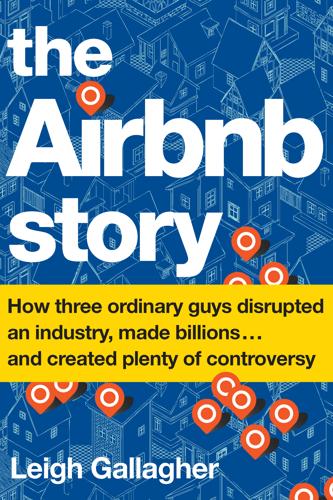
The Airbnb Story: How Three Ordinary Guys Disrupted an Industry, Made Billions...and Created Plenty of Controversy
by
Leigh Gallagher
Published 14 Feb 2017
Chesky has said of the early days that having Blecharczyk on board was like having three engineers. He was the one who created all kinds of free ways to grow: Airbnb’s early hack into Craigslist, the dynamic ad campaigns that could target specific cities, and the special technology to interface with Google AdWords. The payment system he built is legendary in the engineering community. With a less talented person in AirBed & Breakfast’s chief technical role, it may not have gotten off the ground. But Blecharczyk has always had more of a business-oriented mind than the average engineer. He took the GMAT after college and thought seriously about applying to business school.
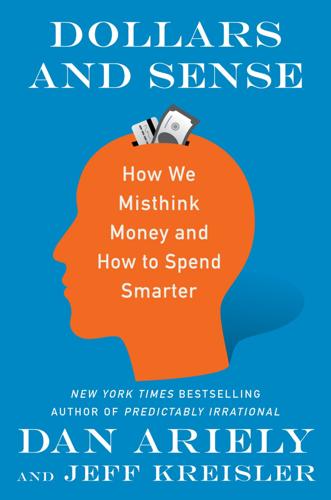
Dollars and Sense: How We Misthink Money and How to Spend Smarter
by
Dr. Dan Ariely
and
Jeff Kreisler
Published 7 Nov 2017
We’ll choose easy and painless over wise and thoughtful every time. While the pain of paying can make us feel guilty after an expensive dinner, it could also prevent us (to some degree) from impulse shopping. In a future with digital wallets being the main way to pay, there is a risk that almost all friction will be eliminated from the payment system. We are then likely to fall for temptation at a much higher rate. It will be almost as if we spend the whole day lying on a beach full of free drinks, snacks, and desserts within arm’s reach. The result? Not good for our long-term health or savings rates. Our hope is that the future of money will not just be about reducing the pain of paying, but that it will also offer us the opportunity to choose more deliberative, thoughtful, and painful payment methods.

The Age of Stagnation: Why Perpetual Growth Is Unattainable and the Global Economy Is in Peril
by
Satyajit Das
Published 9 Feb 2016
Fractional banking, as well as the shadow banking system and derivatives, can amplify the risk within an economy. Debt is intermediated by banks, which by design are leveraged with each dollar of shareholders’ capital supporting anywhere up to 30 dollars in borrowings. Losses can quickly threaten the solvency of financial institutions, increasing the risk of failure of the payment system crucial to modern economies. Weakness in the banking system can reduce the supply of credit to successful businesses, hampering activity. As investors, directly or indirectly through the banking system, hold the borrowers’ IOUs, the value and security of savings are inextricably linked to borrowing.
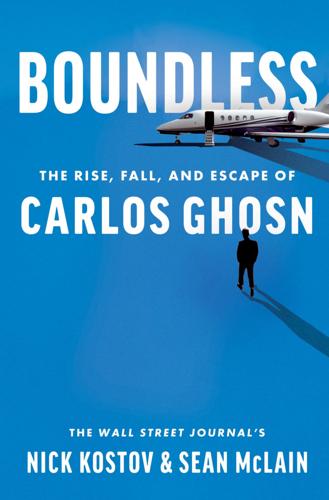
Boundless: The Rise, Fall, and Escape of Carlos Ghosn
by
Nick Kostov
Published 8 Aug 2022
Under that rationale, even if regulators or media caught wind of the sideline salary, they could counter that it was an earned paycheck. But there was no need to raise questions unnecessarily. The arrangement would remain secret. In March, Kelly forwarded a detailed memo on the mechanics of the payment system to Ohnuma, who would oversee the minutiae. Ghosn asked him to make sure it was bulletproof. In April, Kelly asked Becker and Mouna Sepehri, the Renault lawyer, to conduct another round of checks. “Earlier this week the CEO indicated he wanted to make sure that payment of part of his compensation by RNBV without publically [sic] disclosing the amount is legal,” Kelly wrote to her.
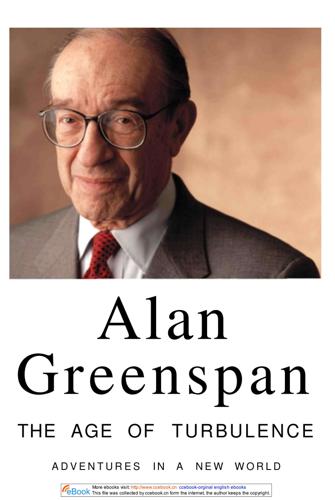
The Age of Turbulence: Adventures in a New World (Hardback) - Common
by
Alan Greenspan
Published 14 Jun 2007
The worst, which I thought highly unlikely, would be a collapse of the financial system. The Federal Reserve is in charge of the electronic payment systems that transfer more than $4 trillion a day in money and securities between banks all over the country and much of the rest of the world. We'd always thought that if you wanted to cripple the U.S. economy, you'd take out the payment systems. Banks would be forced to fall back on inefficient physical transfers of money. Businesses would resort to barter and IOUs; the level of economic activity across the country could drop like a rock. During the cold war, as a precaution against nuclear attack, the Federal Reserve had built a large number of redundancies into the communication and computer facilities on which the money system relies.
…
The FOMC ordered the traders at the New York Fed to buy billions of dollars of treasury securities on the open market. This had the effect of putting more money into circulation and lowering short-term rates. Though we'd been tightening interest rates before the crash, we were now easing them to help keep the economy moving. Despite our best efforts, there were a half dozen near disasters, mostly involving the payment system. A lot of transactions during the business day on Wall Street aren't made simultaneously: companies will do business with 108 More ebooks visit: http://www.ccebook.cn ccebook-orginal english ebooks This file was collected by ccebook.cn form the internet, the author keeps the copyright. BLACK M O N DAY one another's customers, for instance, and then settle up at day's end.
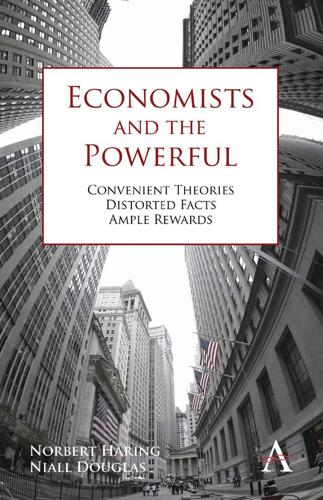
Economists and the Powerful
by
Norbert Haring
,
Norbert H. Ring
and
Niall Douglas
Published 30 Sep 2012
This might make it necessary that foreign banks who want to do business in another country would be required to do so through a subsidiary incorporated in the host country and regulated by the host country. This would ensure that international rules delineate the lower bound, not the upper bound, of the strictness of regulation. Much higher reserve requirements and capital standards would make bank runs less likely and make the payment system safer, thus reducing the amount required to bail out large banks that are failing. Financial transaction taxes (of say 0.1 percent) are an empirically proven method for reducing trading volumes (Wrobel 1996), but given the industry’s mortal opposition to them they have never spread past limited application by some European and Latin American countries (and most countries eliminated them after the industry fought back).

The Corruption of Capitalism: Why Rentiers Thrive and Work Does Not Pay
by
Guy Standing
Published 13 Jul 2016
The ensuing dynamics of inequality cannot be predicted with certainty, but one outcome will be greater income differentiation within the profession. Much the same has been happening to the medical professions since they have been subject to more state regulation. This began with the Thatcher government, which changed the payment system and rolled back doctors’ autonomy. But the decisive changes came under Tony Blair, when reforms led to the widespread contracting out of hospital services. Outsourcing is accelerating the de-professionalisation of services and weakening the rent-earning capacity of professionals. Some analysts have argued that automation will – and should – largely displace the professions.31 For example, in 2014 48 million Americans used online software rather than professionals to do their tax returns, and the most popular US legal service is legalzoom.com, an online advice and do-it-yourself document-drafting service. eBay and PayPal process over 60 million disagreements each year using ‘online dispute resolution’ software that helps settle disputes without involving lawyers.
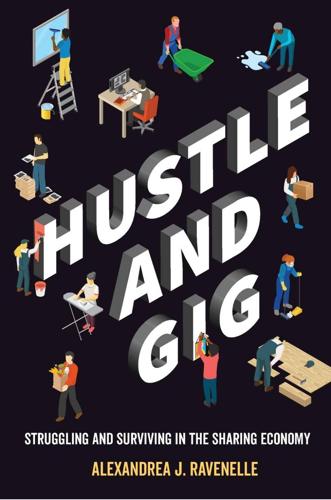
Hustle and Gig: Struggling and Surviving in the Sharing Economy
by
Alexandrea J. Ravenelle
Published 12 Mar 2019
It also seemed to make sense with our first case—the time bank—because the young and old were quite different in their patterns of participation and motives” (personal communication, October 3, 2017). As they’ve met additional older individuals involved in the sharing economy, they’ve included those workers in their sample. 2. The TaskRabbit terms of service note, “Without limitation, while using the TaskRabbit Platform, you may not . . . [a]ttempt to circumvent the payments system or service fees in anyway including, but not limited to, processing payments outside of the platform, including inaccurate information on invoices, or otherwise invoicing in a fraudulent manner.” 3. On the ransacked apartment, see Arrington (2011); on the Madrid story, see Lieber (2015). 4.
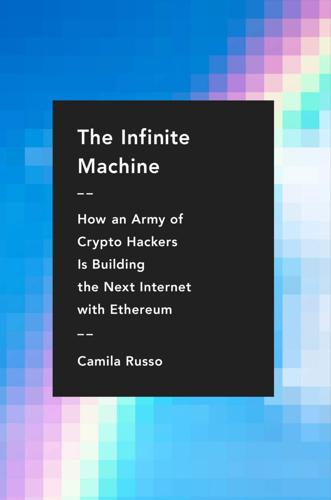
The Infinite Machine: How an Army of Crypto-Hackers Is Building the Next Internet With Ethereum
by
Camila Russo
Published 13 Jul 2020
South Korean police and tax authorities raided two of the largest cryptocurrency exchanges, and the country’s regulators said they were planning greater oversight on trading platforms. China, which had already banned cryptocurrency exchanges in 2017, said it would escalate its crackdown as alternative trading venues continued to pop up. In India, the finance minister said the government would take measures to eliminate the use of cryptocurrencies in the payments system because they are not legal tender. A record $500 million heist at Japanese exchange Coincheck further spooked the market. Facebook banned cryptocurrency ads and US banks cut off credit card purchases of cryptocurrencies. And that was only January. At the end of the month, US regulators made it clear that the couple of ICO cases it had gone after in 2017 had been just the beginning.

MegaThreats: Ten Dangerous Trends That Imperil Our Future, and How to Survive Them
by
Nouriel Roubini
Published 17 Oct 2022
As fiat currencies ebb, the current meteoric rise of crypto alternatives threatens to replace them with speculative Ponzi schemes, with severely unstable systemic effects. Nothing poses a more clear and present danger to the current banking system than innovation from within. Central bank digital currencies may cut banks out of the payment system that sustains them. Weakness, or even the perception of weakness, may bring banks to their knees. Taken together, some or all of these financial and monetary innovations could prove counterproductive and disastrously so. Instead of promoting stability, they will elevate systemic risk and disruptions to levels we have never seen before.

Living in a Material World: The Commodity Connection
by
Kevin Morrison
Published 15 Jul 2008
A Rich Business The very large, family-owned farms (those with 2000 acres or more) represent 4 % of America’s 2.1 million farms and received 31.9 % ($7.75 billion) of the 2005 total payments, while small farmers (those with 100 acres or less), who represent 51.3 % of all farms, received 4.5 % of all payments, and more than half of this was for farmers, not farming, as it was payments for land in the conservation programmes.40 The USDA made no secret of the method of the payment system when it said, ‘Generally, the size of the farm is directly correlated with the value of sales. Larger farms receive more payments and payments increase with the size of the farm.’ The government payment system appears even more skewed to the rich farmers – it is essentially based on profitability (Hoppe and Korb, 2006).
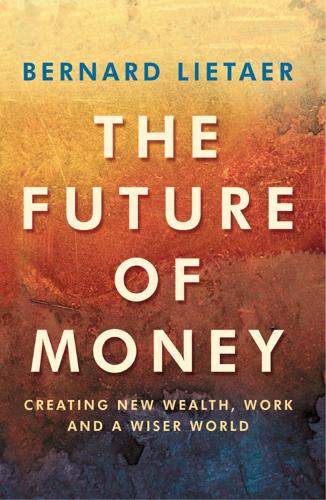
The Future of Money
by
Bernard Lietaer
Published 28 Apr 2013
Economically disadvantaged people can therefore more fully participate in the economic system, as they are typically those who have more time than money to spend. It also provides them with a second career chance in the non-profit world which would otherwise not exist. The discreet nature of the payment system (nobody but themselves has to know whether they are paying in dollars or C$D) also ensures more dignity than food stamps or social security cheques. It is also free of the hassles of these bureaucratic programmes. For the rest of the community Even the people who do not participate at all in any pan of the system derive a significant benefit from this approach.
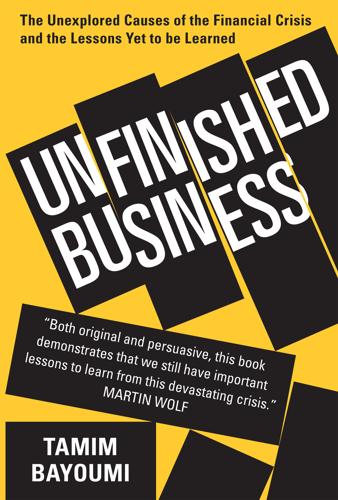
Unfinished Business
by
Tamim Bayoumi
Despite the inclusion of the word “capital” and the use of risk-weighted assets, the Net Capital Rule was primarily aimed at ensuring that customers were able to recover their money in the event of a bankruptcy rather than protecting broker-dealers from going broke. Since the rule was not aimed at preserving the broker-dealers from bankruptcy, the SEC did not have the authority that the bank regulators had to conduct examinations or to intervene to ensure that a bankruptcy did not disrupt the payments system. This was a critical difference that became apparent over the North Atlantic crisis after the immediate cessation of trading caused by the bankruptcy of the investment bank Lehman Brothers led to the collapse in many financial market segments. This splintered regulatory system explains the relatively lax regulation of the investment bank groups.

Lonely Planet's Best of USA
by
Lonely Planet
(Map; %212-925-5755; www.rubyscafe.com; 219 Mulberry St, btwn Spring & Prince Sts; mains $10-15; h9:30am-11pm; b6 to Spring St, N/R to Prince St) 5 Lower East Side Katz’s Delicatessen Deli $$ Map Google Map One of the few remaining Jewish delicatessens in the city, Katz’s attracts locals, tourists and celebrities whose photos line the walls. Massive pastrami, corned beef, brisket and tongue sandwiches are throwbacks to another era, as is the payment system: hold on to the ticket you’re handed when you walk in and pay cash only. (Map; %212-254-2246; www.katzsdelicatessen.com; 205 E Houston St, at Ludlow St; sandwiches $15-22; h8am-10:45pm Mon-Wed & Sun, to 2:45am Thu, open all night Fri & Sat; bF to 2nd Ave) A meal at Katz’s Delicatessen / SIVAN ASKAYO / LONELY PLANET © Fung Tu Fusion $$ Map Google Map Celebrated chef Jonathan Wu brilliantly blends Chinese cooking with global accents at this elegant little eatery on the edge of Chinatown.
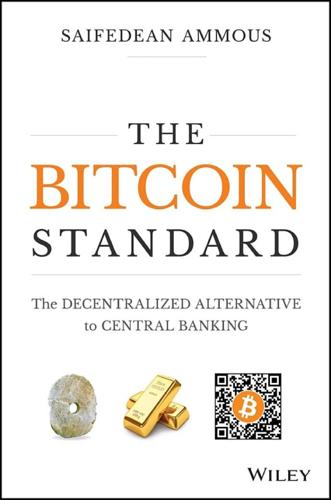
The Bitcoin Standard: The Decentralized Alternative to Central Banking
by
Saifedean Ammous
Published 23 Mar 2018
Security The security of a blockchain database is entirely reliant on the expenditure of processing power on verification of transactions and proof‐of‐work. Blockchain technology can best be understood as the conversion of electric power to verifiable undisputed records of ownership and transactions. For this system to be secure, the verifiers who expend the processing power have to be compensated in the currency of the payment system itself, to align their incentive with the health and longevity of the network. Should payment for the processing power be made in any other currency, then the blockchain is essentially a private record maintained by whoever pays for the processing power. The security of the system rests on the security of the central party funding the miners, but it is compromised by operating on a shared ledger, which opens up many possibilities for security breaches to take place.
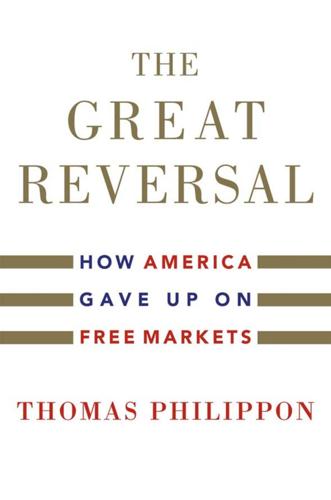
The Great Reversal: How America Gave Up on Free Markets
by
Thomas Philippon
Published 29 Oct 2019
As it turns out, following the crisis of 2010–2012, Europeans decided to move banking supervision and regulation at the EU level. Since then, banking regulators have become tougher and more independent, and banks’ lobbyists have lost some of their influence. This was clear during the GDPR debate and during the revision of the Payment System Directive (PSD2). We will return to the GDPR and the issue of privacy more broadly when we discuss Facebook and Google in Chapters 13 and 14. The third pitfall is that asset management can become too concentrated. Index funds and exchange-traded funds (ETFs) are great inventions. They are cheap, they are simple, and they are certainly better for 95 percent of investors than actively managed funds.

Empire of the Sum: The Rise and Reign of the Pocket Calculator
by
Keith Houston
Published 22 Aug 2023
James Press, 2001), 91; “CASIO の礎を築いた 希代の発明家・樫尾俊雄【前編 (Toshio Kashio, a Rare Inventor Who Laid the Foundation of CASIO),” EMIRA (EMIRA Editorial Committee, June 21, 2017), https://emira-t.jp/ejinden/1775/; Raskin, “Casio’s Eccentric Product Culture, Built on Embracing Failure.” 65 “Casio 14-A.” 66 “Casio 14-B,” IPSJ Computer Museum (Information Processing Society of Japan), accessed June 21, 2021, http://museum.ipsj.or.jp/en/heritage/14-B.html. 67 Raskin, “Casio’s Eccentric Product Culture, Built on Embracing Failure”; “Relay Type Computer AL-1,” IPSJ Computer Museum (Information Processing Society of Japan), accessed June 21, 2021, https://museum.ipsj.or.jp/en/heritage/Relay_type_computer_AL-1.html. 68 Ceruzzi, Reckoners, 97–98. 69 Aspray, Computing Before Computers, 219–220. 70 Ceruzzi, Reckoners, 97–98. 71 Aspray, Computing Before Computers, 220. 72 Merzbach, “Interview with Grace Hopper,” 13. 73 “September 9: First Instance of Actual Computer Bug Being Found,” This Day in History (Mountain View, CA: Computer History Museum), accessed June 21, 2021, https://www.computerhistory.org/tdih/september/9/. 74 “Establishment of CASIO.” 8. the sumlock anita 1 Nigel Tout, ed., “Origins of the Bell Punch Company,” Anita Calculators, accessed June 28, 2021, http://anita-calculators.info/html/origins_of_bell_punch_co_.html. 2 “IBM Mainframes,” IBM Archives (IBM), accessed June 28, 2021, https://www.ibm.com/ibm/history/exhibits/mainframe/mainframe_intro.html; Nigel Tout, “All Change at Bell Punch,” Anita Calculators, accessed June 28, 2021, http://anita-calculators.info/html/all_change_at_bell_punch.html. 3 Nigel Tout, “The Development of ANITA: Part 1,” Anita Calculators, accessed June 28, 2021, http://www.anita-calculators.info/html/development_of_anita_1.html; “Nomination Form: Bell Telephone Laboratories,” National Register of History Places (National Park Service, March 5, 1975). 4 Paul M. Connolly and Robert W. Eisenmenger, “The Role of the Federal Reserve in the Payments System,” Federal Reserve Bank of Boston Conference Series 45 (October 2000): 131–161, https://ideas.repec.org/a/fip/fedbcp/y2000ioctp131-161n45.html. 5 Tout, “Origins of the Bell Punch Company.” 6 Nigel Tout, “Introduction to Plus & Sumlock Mechanical Calculators,” Anita Calculators, accessed June 29, 2021, http://anita-calculators.info/html/introduction1.html. 7 Roger G.

The Measure of Progress: Counting What Really Matters
by
Diane Coyle
Published 15 Apr 2025
This will require a change of mindset; digital public infrastructure is commonly seen as a means of delivering government services to individuals. It could be the locus of interaction between the government, businesses, and people. Firms as well as individuals can have a B or de r s 175 digital identity, and their transactions in any jurisdiction w ill run through the payments system. The digital infrastructure needs to be put in place to implement policies or collect taxes—such as Paul Romer’s proposed tax on digital advertising or even a tax on the number of parcels Amazon sends out to cover the local government costs of waste collection and recycling. A successful market economy has to be a partnership between government and businesses; businesses need a social licence to operate.

Platform Revolution: How Networked Markets Are Transforming the Economy--And How to Make Them Work for You
by
Sangeet Paul Choudary
,
Marshall W. van Alstyne
and
Geoffrey G. Parker
Published 27 Mar 2016
Among other techniques, they simulated consumer demand on eBay by creating a bot (an automated software tool) that bought goods on the site and then insisted on paying for these transactions using PayPal. Noting this apparent growth in demand, many eBay sellers signed up for the PayPal service—which in turn made PayPal even more visible and attractive to consumers. The sellers began posting PayPal icons on their sites, enabling buyers to access the payment system with just a single click of the mouse, reducing friction still further.3 Within three months, PayPal’s user base grew from 100,000 to one million. The leaders of eBay noticed how PayPal had built its own platform business partly on eBay’s back. Concerned about the potential competitive threat posed by a company that was building an independent connection with eBay customers (and siphoning off a fraction of the revenues from eBay transactions to boot), eBay tried to fight back.
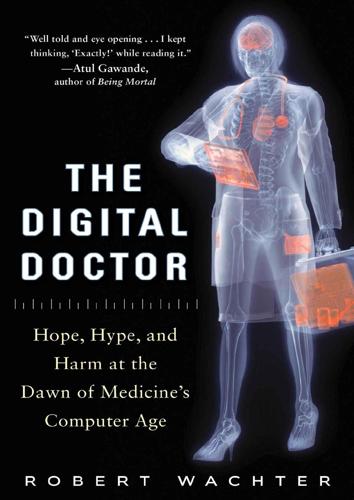
The Digital Doctor: Hope, Hype, and Harm at the Dawn of Medicine’s Computer Age
by
Robert Wachter
Published 7 Apr 2015
Chapter 29 Art and Science The more questioningly we ponder the essence of technology, the more mysterious the essence of art becomes. —Martin Heidegger, The Question Concerning Technology, 1977 Not long ago, I gave a talk to a group of UCSF medical students. I chose to focus on the transformation of healthcare: changes in the payment system, public reporting, the structure of hospitals and clinics, the engagement and empowerment of patients, and, yes, the technology. Of course, it’s the older doctors who are most troubled by the changes (a few years ago, one of my senior colleagues, a respected cardiologist, said, “It could be worse… .
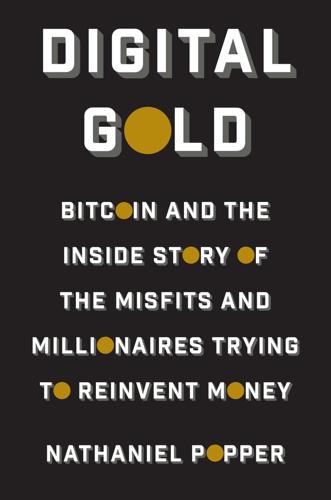
Digital Gold: Bitcoin and the Inside Story of the Misfits and Millionaires Trying to Reinvent Money
by
Nathaniel Popper
Published 18 May 2015
The questions from the Wells Fargo executives did not reveal much about how serious the bank was about the project, but they had clearly done their homework and came with detailed questions about what exactly an exchange would look like and how it might satisfy regulators. The meeting concluded with an understanding that the bank would take it all under consideration. The potential advantages of Bitcoin over the existing system were underscored in late December, when it was revealed that hackers had breached the payment systems of the retail giant Target and made off with the credit card information of some 70 million Americans, from every bank and credit card issuer in the country. This brought attention to an issue that Bitcoiners had long been talking about: the relative lack of privacy afforded by traditional payment systems.
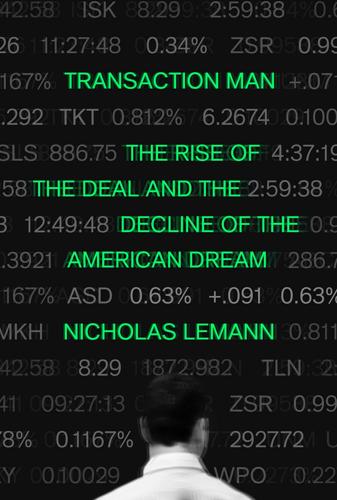
Transaction Man: The Rise of the Deal and the Decline of the American Dream
by
Nicholas Lemann
Published 9 Sep 2019
The doctrine of “too big to fail” is based on this point … Financial innovation has worsened this problem. Institutions have many new avenues for taking risk that are difficult for even sophisticated market participants to fully understand, and the interrelationships are even more complex … In the case of banks, the existence of deposit insurance coupled with access to the payments system [operated by the Federal Reserve] creates moral hazard with a clear incentive for excessive risk-taking. This is, after all, the rationale for regulating and supervising banks. In the case of other financial intermediaries there may be implicit but not explicit guarantees because many are too big to fail—a recognition that the failure of such entities also creates a systemic risk.

The End of Wall Street
by
Roger Lowenstein
Published 15 Jan 2010
“AIG is absolutely appropriate.” The CEOs divided their weekend labor into three groups: one would assess Lehman’s most problematic assets; another, steered by Thain, would devise a structure for acquiring Lehman (or parts of it); and a third, a “doomsday” unit, would explore how to minimize the damage to the payment system and other banking functions if a rescue failed. Around 8:30 P.M., the CEOs left, scattering to restaurants and homes. John Mack picked up a takeout Italian dinner and headed back to Morgan Stanley, where he briefed his lieutenants.16 Dimon phoned Hogan, his associate, on his way uptown, advising him to order JPMorgan hands to report early Saturday morning.
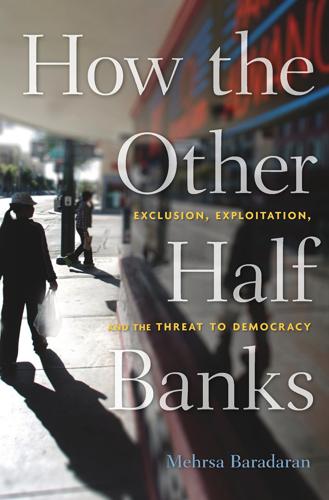
How the Other Half Banks: Exclusion, Exploitation, and the Threat to Democracy
by
Mehrsa Baradaran
Published 5 Oct 2015
Lawsky instructed the banks to develop safeguards to “choke off” the offending lenders as well as the payday lending industry as a whole.109 By December 2013, the DOJ had issued over fifty subpoenas to banks and payment processors.110 In January 2014, Four Oaks Bank was the first bank to settle with the DOJ for $1.2 million and agreed to restrictions on its ability to do business with Internet payday lenders.111 Almost 100 percent of Four Oaks Bank’s customers were Internet payday lenders, and the company was granting them access to the payment system only to be used by banks. Not only were these lenders charging between 400 percent and 1800 percent interest, in excess of state usury laws, but they were gaining unauthorized access to their borrower’s accounts. According to the consent order, the lenders offered borrowers loans with an agreement that customers would pay their loan via a debit on a particular date, at which point their obligation would be discharged.
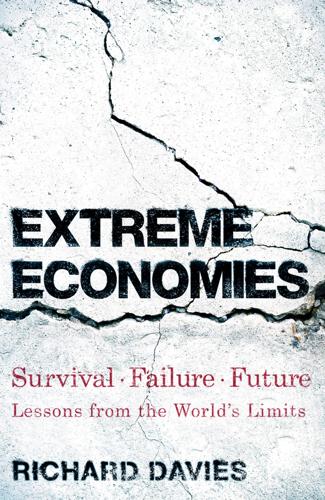
Extreme Economies: Survival, Failure, Future – Lessons From the World’s Limits
by
Richard Davies
Published 4 Sep 2019
America’s underground prison economies use a host of parallel currencies, including mackerel, coffee and the newest digital ‘dot’ currency; the traditional gold culture of Aceh provides savings and insurance; in Zaatari, traders had turned powdered milk into a tradeable asset as a way to suck hard cash into the refugee camp. People are able to create markets, and have the ability to establish complex ways to transfer value – building the payment system their economy runs on – that is innate. Engineered economies stamp this out and waste these skills. By holding back self-built trade, systems of tight control block more than just the exchange of goods. When you live on an economic knife-edge, you tend to see the value of being able to trade freely quite clearly.
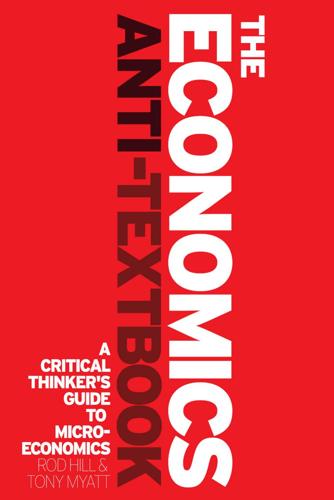
The Economics Anti-Textbook: A Critical Thinker's Guide to Microeconomics
by
Rod Hill
and
Anthony Myatt
Published 15 Mar 2010
An important element in their malfunction involves an externality which public regulation and institutions should address. When a bank makes a loan to a business, it faces some risk of the firm not meeting its obligations. This not only makes the lending bank riskier, it makes other banks with which it is linked in the payments system a little riskier too. This is an externality (Kaufman and Scott 2003). When the bank makes the loan, it thinks only of the additional risk it is assuming, not of the additional risk it imposes on other banks. This has consequences for the stability of the entire financial system if an event (such as a fall in housing prices or a recession) increases the number of defaulting loans faced by all banks.
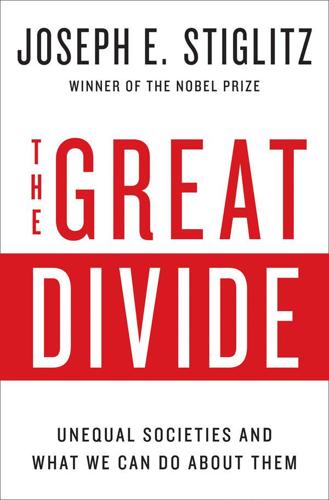
The Great Divide: Unequal Societies and What We Can Do About Them
by
Joseph E. Stiglitz
Published 15 Mar 2015
Third, the most invidious aspect of this deregulation-induced inequality is that associated with the abusive practices of the financial sector—which prospers at the expense of ordinary Americans, through predatory lending, market manipulation, abusive credit card practices, or taking advantage of its monopoly power in the payments system. The Fed has enormous powers to prevent these abuses, and even more since the passage of the Dodd-Frank Act of 2010. Yet the central bank has repeatedly failed at this, systematically focusing on strengthening the banks’ balance sheets, at the expense of ordinary Americans. Fourth, it is not only the case that America’s financial sector did what it shouldn’t have done, but it also didn’t do what it was supposed to do.
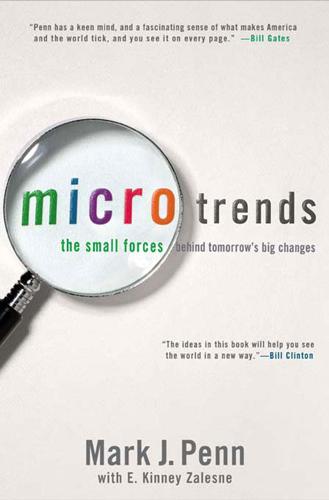
Microtrends: The Small Forces Behind Tomorrow's Big Changes
by
Mark Penn
and
E. Kinney Zalesne
Published 5 Sep 2007
In 2005, only 8 percent of adults said they use e-mail with their doctors—but 81 percent said they would like to. Doctors will have to figure out a way to charge for e-mail consults first—they would no doubt like to help patients this way, especially existing patients, but perhaps not at the expense of all their office visits. Once the payment system catches up, though, look for more e-consults. We can also anticipate even more pressure on the Federal Drug Administration to move more medicines from prescription-only to OTC. Already, we can get about 700 more medicines OTC today than we could thirty years ago, but that may not be sufficient for hard-core DIY Docs.
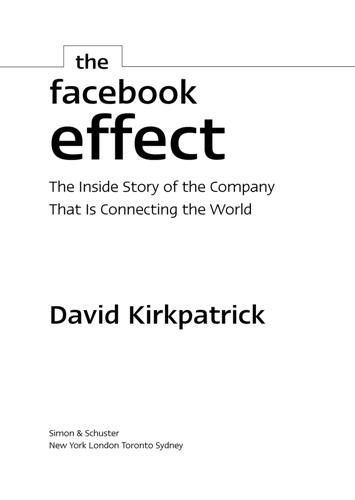
The Facebook Effect
by
David Kirkpatrick
Published 19 Nov 2010
The company implemented a variety of new rules to try to police applications and make them behave. It urged users to complain about spam. It changed the software to reduce the number of application stories flowing into a user’s News Feed. And it hired an industry veteran to head up the platform. Ben Ling, a slender and flamboyant Chinese-American, had been running the payment system called Google Checkout. He was the highest-level employee Facebook had ever lured away from Google. Executives called him a “rock star.” By the summer of 2008 the problems had gotten completely out of hand. Facebook’s platform was like the Wild West. So at a second f8 that July, Facebook announced a variety of refinements and rule changes, including a rating system.
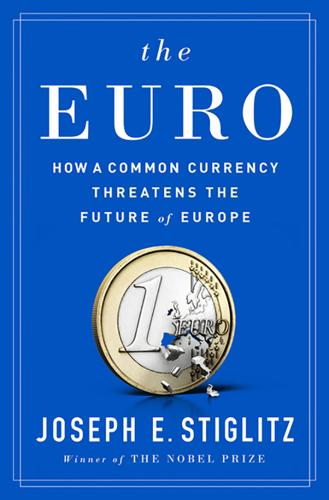
The Euro: How a Common Currency Threatens the Future of Europe
by
Joseph E. Stiglitz
and
Alex Hyde-White
Published 24 Oct 2016
I described, too, a system by which net payments to and from abroad could be kept balanced: exporters would receive chits in addition to payments in the local-euro into their account, and those who wanted to import would have to buy a corresponding number of chits, in addition to making payments out of their accounts. The system of marketable trading chits would ensure that the value of exports equaled the value of imports—there would be no net flow in or out of the payments system. As we saw in chapter 10, countries could decide to allow a trade deficit or insist on a trade surplus, simply by changing the ratio of chits one received for a euro of exports relative to those needed for imports. In this system, the value of one country’s euro could vary relative to that of another’s (and even more, the value of that country’s euro plus the associated value of a chit).
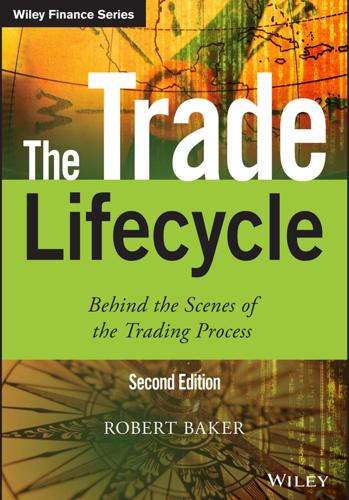
The Trade Lifecycle: Behind the Scenes of the Trading Process (The Wiley Finance Series)
by
Robert P. Baker
Published 4 Oct 2015
Timing risk is the risk of unavailability of funds or items for exchange at the due time. When the item not available is the settlement medium itself the risk is known as liquidity risk. Whereas credit risk involves the possibility of a loss, timing risk involves a possible cashflow shortfall. The timing risk is usually due to technical problems with either the payment system itself or the way the payment has been entered into the system. It can be very costly, involving expensive borrowing to cover the shortfall and it can be totally unexpected. Example Here we present an example payment through a payment system and describe the risks that could arise (see Figure 12.2).
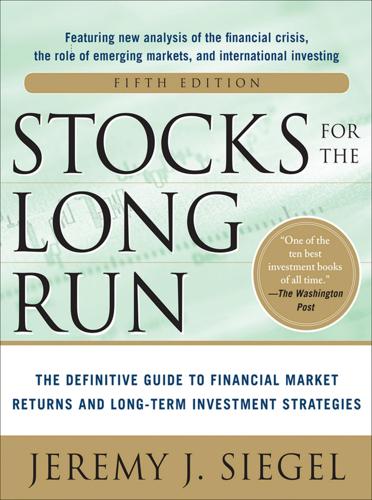
Stocks for the Long Run 5/E: the Definitive Guide to Financial Market Returns & Long-Term Investment Strategies
by
Jeremy Siegel
Published 7 Jan 2014
The new facility was called the Asset-Backed Commercial Paper Money Market Mutual Fund Liquidity Facility. 28. Non-interest-bearing accounts (demand deposits) were used by business to process wage and other payments. Their security was deemed of paramount importance by the Fed in order to keep the payments systems functioning. 29. In 1996 the ratio of the FDIC’s trust fund to deposits, called the designated deposit ratio, was set at 1.25 percent, but by September 2008 it fell below 1.0 percent. 30. Bernanke earned his doctorate eight years after I received mine in the same specialty from the Department of Economics.
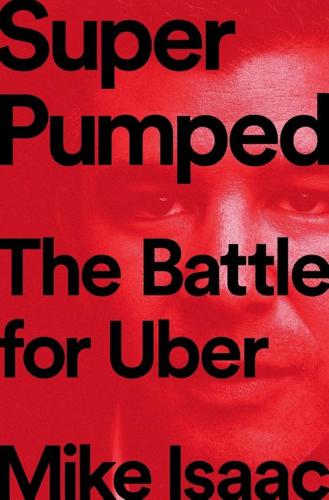
Super Pumped: The Battle for Uber
by
Mike Isaac
Published 2 Sep 2019
Sullivan would also add incorrect details when making a payment, an intentional maneuver that made the transactions fail to go through. After the payments failed enough times, the attacker would give additional details about his account location, which helped Sullivan narrow the location details further. Backtracking the blackmailer’s steps through the payment system led Sullivan to a former Google intern, now located in Nigeria. After finding his address in Lagos, Sullivan hired a local lawyer to confront the guy at a coffee shop in Nigeria. The intern immediately confessed to the scam and handed over his computer and email account information. After they gained access, they discovered the scammer’s activities had gone far beyond Sullivan’s female friend; the intern was part of an enormous, ongoing Match.com scam.
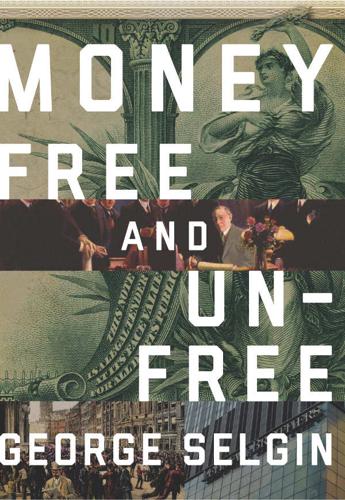
Money Free and Unfree
by
George A. Selgin
Published 14 Jun 2017
It was originally published in The Independent Review 14, no. 4 (Spring 2010): 485–96. 3 LEGAL RESTRICTIONS, FINANCIAL WEAKENING, AND THE LENDER OF LAST RESORT* It is not unlikely that the bolstering up of banking systems by their Governments is a factor which makes for instability. —VERA SMITH (1936: 5) A POPULAR DEFENSE of central banks and fiat money claims that they are needed to protect the payments system against the peril of financial crises. A central bank can act as a “lender of last resort” to other banks, assuring depositors that they need never fear a general banking collapse; fiat money in turn guarantees that the lender of last resort itself will never go broke.1 A crucial assumption behind the lender-of-last-resort argument is that fractional-reserve banking is inherently “fragile” and crisis prone—that central banking and fiat money are an unavoidable response to market failure.
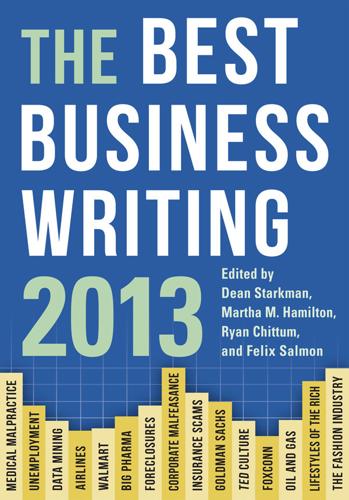
The Best Business Writing 2013
by
Dean Starkman
Published 1 Jan 2013
On Capitol Hill, the nation’s dialysis clinics, which were receiving as much as 25 percent of their revenue from using the drugs, were sometimes a key ally of the drugmakers. One of the nation’s largest dialysis chains, in fact, in 2004 offered bonuses to its chief medical officer if he blocked efforts to reform the payment system. According to a financial filing, Charles J. McAllister, chief medical officer of DaVita, the dialysis company, was to receive a $200,000 bonus if the rules for the drugs’ use being considered by regulators were dropped or delayed. He was to receive an additional $100,000 if the then-new legislation, known as the Medicare Modernization Act, didn’t cut into the company’s revenue.
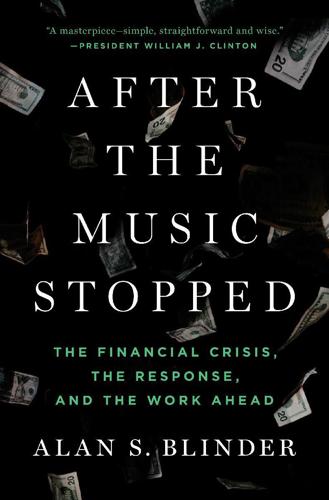
After the Music Stopped: The Financial Crisis, the Response, and the Work Ahead
by
Alan S. Blinder
Published 24 Jan 2013
The problem went deeper than Greenspan’s personal beliefs, however, and was more generic. Consumer affairs are destined to occupy the lowest rung on any central bank’s ladder—always dwarfed in prestige and internal importance by the bank’s primary missions: conducting monetary policy, regulating and supervising banks, and safeguarding the payments system. Indeed, one could argue—as many did—that it made little sense to assign primary responsibility for consumer protection to the central bank. It wasn’t one of the Fed’s core competencies. In a now-celebrated 2007 article, a Harvard law professor named Elizabeth Warren proposed the creation of a new regulatory agency, which she dubbed the Financial Product Safety Commission, by clear analogy to the Consumer Product Safety Commission, to focus single-mindedly on this issue.
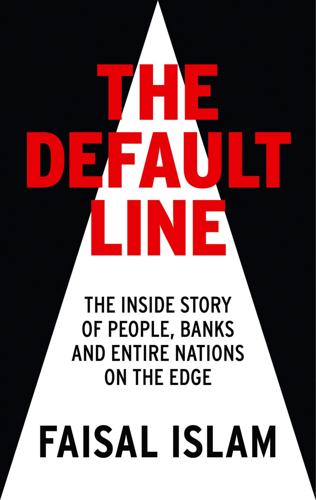
The Default Line: The Inside Story of People, Banks and Entire Nations on the Edge
by
Faisal Islam
Published 28 Aug 2013
‘If you knew it was going to cost €30 billion, the sensible thing for the Irish government to do would have been to have closed it down to depositors and for bondholders to have to taken a hit,’ one of Ireland’s most senior policymakers told me. ‘For the Irish authorities in retrospect, I think it was a very bad mistake.’ Anglo Irish did not have cash machines, and could not be considered systemic for the functioning of ordinary deposits or the payments system. The first guarantee of September 2008 was an Irish sovereign decision. Indeed, the ‘Anglo Tapes’ of internal conversations of its bankers from just before this decision showed the contempt Anglo Irish had for Irish taxpayers. Not only was an initial negotiation of €7 billion a number ‘picked out of my arse’, but the senior bankers also plotted to lure a small amount of taxpayer funding, knowing that the government would never be able to stop and would not get its money back.
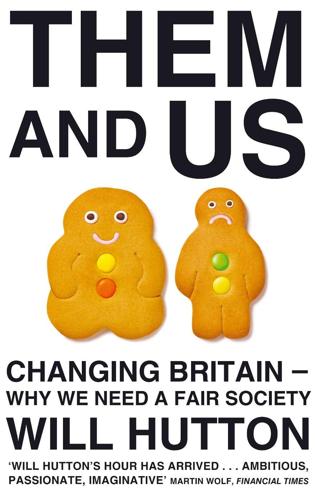
Them And Us: Politics, Greed And Inequality - Why We Need A Fair Society
by
Will Hutton
Published 30 Sep 2010
One study has shown that the degree of separation is as low as 1.4: in other words, almost all of the members of the network transact with each other. But at the same time, there has been a fourteen-fold increase in the number of ‘nodes’(the constituents of a network, whether individuals or banks), many of whose activities – the payment system, deposits and lending – burrow deeply into the real economy.48 This lack of awareness about interconnectedness had plagued the financial system for years – both regulators and participants. As mentioned earlier, LTCM was brought to its knees because it had wrongly assumed a high degree of separation between Danish mortgage-backed bonds and Russian bonds.

Fancy Bear Goes Phishing: The Dark History of the Information Age, in Five Extraordinary Hacks
by
Scott J. Shapiro
In the words of one Russian spammer posting on a public forum: “Fucking Visa is burning us with Napalm.” Most cybercriminals today use cryptocurrencies, such as Bitcoin. When ransomware encrypts someone’s hard drive or a company’s network, making their data unreadable, and demands that the victim pay ransom for the decryption key, the medium of exchange is almost always Bitcoin. To target the payment systems of modern cybercrime we should, therefore, target Bitcoin. Bitcoin is often advertised as an anonymous form of payment, like cash. When you hand over a dollar for gum, the cashier doesn’t need to know who you are. The cashier just takes your money. But Bitcoin is not like cash in this respect.
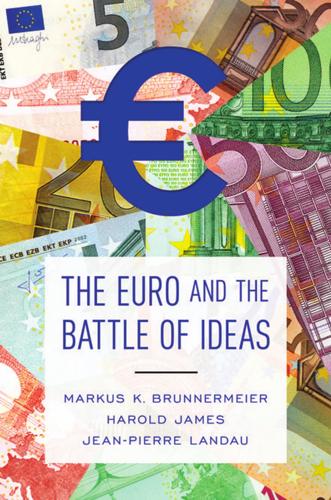
The Euro and the Battle of Ideas
by
Markus K. Brunnermeier
,
Harold James
and
Jean-Pierre Landau
Published 3 Aug 2016
In such a system, the domestic money supply is backed entirely by foreign currency. In other words, the central bank will be willing to freely exchange (at par) local currency for foreign currency. The strongest commitment is to join a currency union, as exiting the union typically destroys the banking system and makes the payment system dysfunctional. In a sense, then, a currency union is the tightest imaginable straitjacket. Such external commitment devices do, however, come with a costly loss of flexibility. When bad states of the world arise, countries with a strong monetary reputation can use up reputational capital, while countries bound by an external commitment device have to pay the breakup costs exactly when it hurts the most.
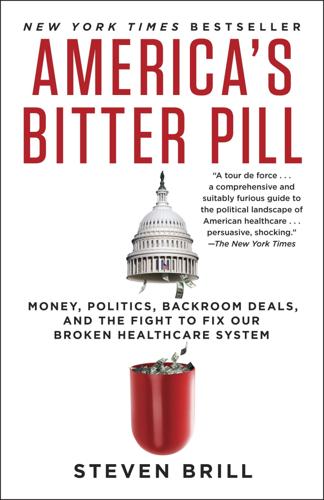
America's Bitter Pill: Money, Politics, Backroom Deals, and the Fight to Fix Our Broken Healthcare System
by
Steven Brill
Published 5 Jan 2015
“The Administration will put its foot down in Conference,” one aide wrote in a journal, referring to additional opportunities to make changes during the closed-door negotiations in which a bill passed by the Senate would be merged with one passed by the House. The House and the Senate bills each included language encouraging the bundling of care as an alternative to fee-for-service, but “the design of the bundled payment program will have almost no effect on the payment system and practices of physicians,” one memo circulating among the staff conceded, before listing five bundling provisions that they had to push for in the anticipated conference. Meantime, Reid moved not only to lock in votes with any amendments necessary to keep his Democrats on board, but also to head off some Republican mischief.
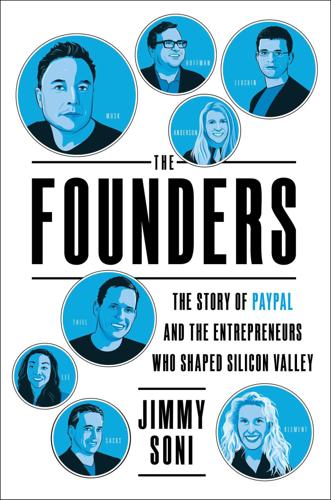
The Founders: The Story of Paypal and the Entrepreneurs Who Shaped Silicon Valley
by
Jimmy Soni
Published 22 Feb 2022
Or maybe we did, we just don’t know that we did. David Beito: That X.com model is a serious threat. You can send money to anyone that has an email address with their PayPal service. I have a bunch of friends that work on the online auctions and every one of them has signed up with PayPal. They’re taking the payment system away from us. They’re going to get people hooked on that, and pretty soon they’re going to be able to charge for it. Is it worth, say, six bucks a month to be able to do that? Bankers used to wonder about getting $25 for an overdraft, but we all charge it, and people pay it. On top of all that, the company’s user base was expanding, with over 10,000 new accounts still being opened daily.
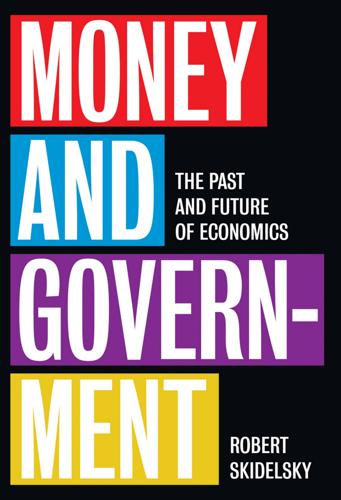
Money and Government: The Past and Future of Economics
by
Robert Skidelsky
Published 13 Nov 2018
There was no fiscal response to the first two phases. 3. The collapse and non-rescue of the investment bank Lehman Brothers during the weekend of 13–14 September 2008, which started the third and most acute phase of the financial and economic crisis. A week of total credit paralysis followed, with the payments systems everywhere endangered. Many banks in the USA, UK, Europe and elsewhere went bankrupt and had to be rescued. (Of 101 banks with balance sheets of over $100 billion in 2006, half failed.) Between September and December 2008, the Federal Reserve and the European Central Bank made available €2 trillion of credit to banks at 1 per cent interest, and started buying government and commercial debt on a small scale.

Elon Musk
by
Walter Isaacson
Published 11 Sep 2023
“We had a vast amount of traction on eBay,” says Reid Hoffman, an early employee who later cofounded LinkedIn. “Max and Peter thought we should focus entirely on that and become a master merchant service.” Musk insisted that the company’s name should be X.com, with PayPal as merely one of its subsidiary brands. He even tried to rebrand the payment system X-PayPal. There was a lot of pushback, especially from Levchin. PayPal had become a trusted brand name, like a good pal who is helping you get paid. Focus groups showed that the name X.com, on the contrary, conjured up visions of a seedy site you would not talk about in polite company. But Musk was unwavering, and remains so to this day.

Self Build Simplified
by
Barry Sutcliffe
Published 7 Jun 2016
How much choice do you have on the fitting out of the house? How do they work out their prices for this part of the project? Can you take over before completion to save money if you want to? Do / can they do the landscaping / driveways etc? Can they give you an overall guide price for previous work on a house similar to yours? How is the payment system set up? (Will this tie in with your mortgage stage payments?) Do you get cost reports during the build? If the build is going over budget (for whatever reason), what would they do to try to pull it back? Can you speak to previous clients? D&B is not something which has yet taken off in the UK.

Engineering Security
by
Peter Gutmann
The fault also lay to some extent with the iPhone, which alongside a number of other flaws in its PKI implementation trusted the Verisign test certificates when it really shouldn’t have [238], a well-known problem in PKI called universal implicit cross-certification that’s discussed in more detail in “Certificate Chains” on page 669. Mind you Apple didn’t just trust Verisign-issued certificates but any certificates that users dropped onto their devices, so that it was possible to bypass the payment system in Apple’s app store by installing your own CA certificate on your iPhone, iPad, or Mac and having it “validate” purchases through you rather than the real app store [239][240][241][242]11 (the fact that Apple took precautions to protect against outsiders but not against their own users is an example of projection bias, covered in more detail in “Confirmation Bias and other Cognitive Biases” on page 145).
…
More seriously, applications such as the one used with the German national ID card didn’t bother performing any certificate validation, so that any certificate was regarded as valid [420][421]. Applications from other vendors have exhibited similar problems. Amazon Payments, for example, automatically trusted any certificate that was pointed to by a user-supplied URL, making it possible to sign and inject any data you wanted into the payment system to fool the merchant into believing that Amazon had successfully processed your payment [422]. As already discussed in “Security Guarantees from Vending Machines” on page 38, Apple’s app store could be similarly bypassed because Apple automatically trusted any CA certificates installed on an iPhone, iPad, or Mac.
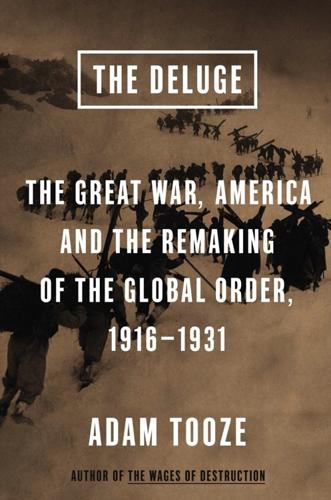
The Deluge: The Great War, America and the Remaking of the Global Order, 1916-1931
by
Adam Tooze
Published 13 Nov 2014
They had reason to fear that once Berlin’s reparations liability increased under the payments schedule of the Dawes Plan, this would crowd out Germany’s private debts to Wall Street. The negotiations that were concluded a year later in the Second Hague Conference of January 1930 were a mixed success.4 In form at least, the Young Plan promised to defuse the reparations issue by depoliticizing the payments system. But substantively, thanks to the refusal of Washington to allow any joint discussion of war debts and reparations, the outcome was a disappointment. Given Washington’s intransigence, which became ever more marked as the Hoover administration came into office in March 1929, France and Britain could concede a reduction of Germany’s reparations payments of no more than 20 per cent.5 Their room for manoeuvre was small.
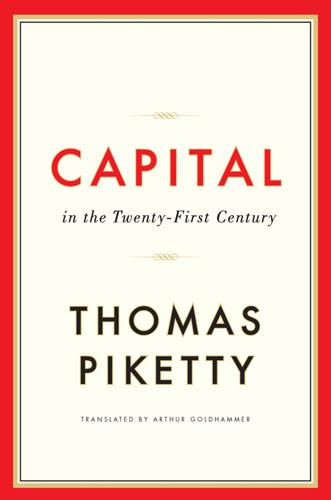
Capital in the Twenty-First Century
by
Thomas Piketty
Published 10 Mar 2014
The Cyprus Crisis: When the Capital Tax and Banking Regulation Come Together The primary and indispensable role of central banking is to ensure the stability of the financial system. Central banks are uniquely equipped to evaluate the position of the various banks that make up the system and can refinance them if necessary in order to ensure that the payment system functions normally. They are sometimes assisted by other authorities specifically charged with regulating the banks: for example, by issuing banking licenses and ensuring that certain financial ratios are maintained (in order to make sure that the banks keep sufficient reserves of cash and “safe” assets relative to loans and other assets deemed to be higher risk).

The Man Who Knew: The Life and Times of Alan Greenspan
by
Sebastian Mallaby
Published 10 Oct 2016
DB_ID=111&DB_Name=Air%20Carrier%20Statistics%20%28Form%2041%20Traffic%29-%20All%20Carriers&DB_Short_Name=Air%20Carriers. 29. Greenspan, Age of Turbulence, Kindle locations 80–87. 30. From Age of Turbulence: “We’d always thought that if you wanted to cripple the U.S. economy, you’d take out the payment systems. Banks would be forced to fall back on inefficient physical transfers of money. Businesses would resort to barter and IOUs; the level of economic activity across the country could drop like a rock.” Ibid., 91–93. 31. Emily Walker, “Memorandum for the Record of Meeting with William J. McDonough” (National Commission on Terrorist Attacks upon the United States, January 21, 2004), https://catalog.archives.gov/OpaAPI/media/2610306/content/arcmedia/9-11/MFR/t-0148-911MFR-00711.pdf. 32.

The House of Morgan: An American Banking Dynasty and the Rise of Modern Finance
by
Ron Chernow
Published 1 Jan 1990
Although the statement apparently wasn’t a case of clever premeditation, Preston didn’t mind the uproar. Bob Engel reiterated the point: “If we became convinced that we would never get full expanded securities power, we would owe it to our shareholders to reconsider whether we still wanted to be a bank. We could still become a private bank—drop out of the Fed and the payments system.”7 Some of this was tactical bluster, but it revealed the impatience at 23 Wall. The 1929 crash had led straight to Glass-Steagall. Ironically, the 1987 crash would prove its undoing, as Black Monday deepened national discontent with Wall Street. Morgan Stanley and the other big securities houses looked increasingly like a cosy cartel protected by Glass-Steagall —an outcome quite different from that expected by the New Deal reformers, who wanted to bust up concentrated Wall Street power.

Costa Rica
by
Matthew Firestone
,
Carolina Miranda
and
César G. Soriano
Published 2 Jan 2008
San José, via San Isidro (Tracopa) ₡4700; seven hours; departs from the terminal near Muelle Bananero at 5am and 1:30pm. Zancudo ₡2500; three hours; departs1:30pm. Return to beginning of chapter Getting Around City buses and collective taxis travel up and down the main road of Golfito. Although the payment system seems incomprehensible to anyone else but the locals, it shouldn’t cost you more than a few coins. Return to beginning of chapter PARQUE NACIONAL PIEDRAS BLANCAS Formerly known as Parque Nacional Esquinas, this national park was established in 1992 as an extension of Corcovado. Currently, Piedras Blancas or ‘White Rocks’ covers an area of 120 sq km of undisturbed tropical primary rainforest, as well as 20 sq km of secondary forests, pasture land and coastal cliffs and beaches.

Eastern USA
by
Lonely Planet
Katz’s Delicatessen DELI $$ (205 E Houston St; sandwiches $13; 8am-9:45pm Mon & Tue, to 10:45pm Wed, Thu & Sun, to 2:45am Fri & Sat) One of the few remaining Jewish delicatessens in the city, Katz’s attracts locals, tourists and celebrities whose photos line the walls. Massive pastrami, corned beef, brisket and tongue sandwiches are throwbacks, as is the payment system: hold on to the ticket you’re handed when you walk in and pay cash only. Kuma Inn ASIAN $$ ( 212-353-8866; 113 Ludlow St, btwn Delancey & Rivington; mains $11; 6-11pm) Reservations are a must at this strikingly popular spot, in a secretive 2nd-floor location that feels like a reconfigured apartment.

Stigum's Money Market, 4E
by
Marcia Stigum
and
Anthony Crescenzi
Published 9 Feb 2007
For example, in recent years a vast market for credit derivates has been created, and we are left wondering: Why didn’t someone see the possibilities earlier? This is a question that will likely be asked each time a new product or way of trading is introduced. Also, there is now much greater connectivity than ever before between brokers, banks, and investors, and in the payments systems that settle literally trillions of dollars of daily transactions in cash and securities. The commercial paper market, now twice the size of the Treasury bill market, is today used for a multitude of purposes and in a multitude of ways undreamed of in the past. And then there’s a huge medium-term note (MTN) market, which, belying its name, has replaced a chunk of the traditional bond market.
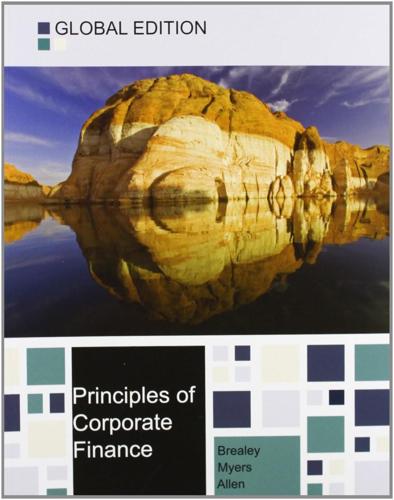
Principles of Corporate Finance
by
Richard A. Brealey
,
Stewart C. Myers
and
Franklin Allen
Published 15 Feb 2014
It can still compensate managers with shares, but the shares will not be valued in a financial market. The basic functions of financial markets are the same the world over. So it is not surprising that similar institutions have emerged to perform these functions. In almost every country you will find banks accepting deposits, making loans, and looking after the payments system. You will also encounter insurance companies offering life insurance and protection against accident. If the country is relatively prosperous, other institutions, such as pension funds and mutual funds, will also have been established to help manage people’s savings. Of course there are differences in institutional structure.

USA Travel Guide
by
Lonely, Planet
Katz’s Delicatessen DELI $$ Offline map Google map ( 205 E Houston St; sandwiches $13; 8am-9:45pm Mon & Tue, to 10:45pm Wed, Thu & Sun, to 2:45am Fri & Sat) One of the few remaining Jewish delicatessens in the city, Katz’s attracts locals, tourists and celebrities whose photos line the walls. Massive pastrami, corned beef, brisket and tongue sandwiches are throwbacks, as is the payment system: hold on to the ticket you’re handed when you walk in and pay cash only. Kuma Inn ASIAN $$ Offline map Google map ( 212-353-8866; 113 Ludlow St, btwn Delancey & Rivington; mains $11; 6-11pm) Reservations are a must at this strikingly popular spot, in a secretive 2nd-floor location that feels like a reconfigured apartment.